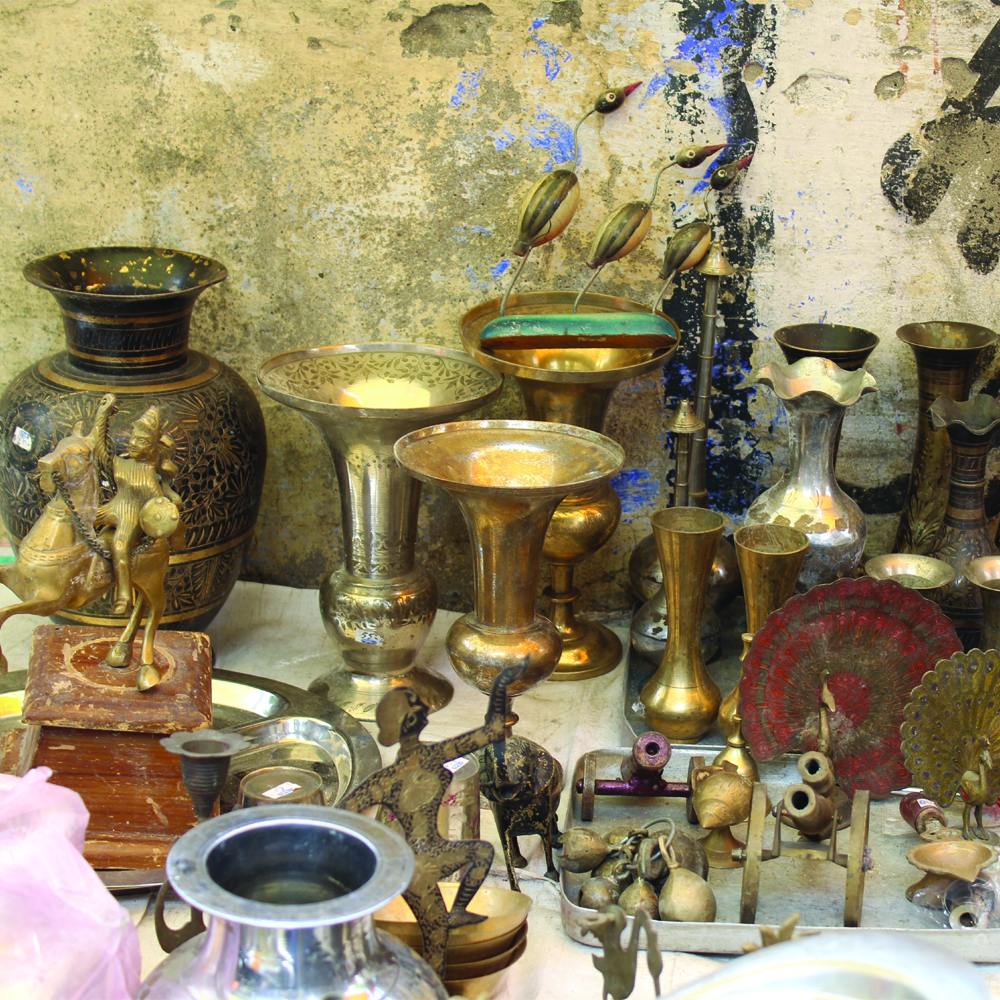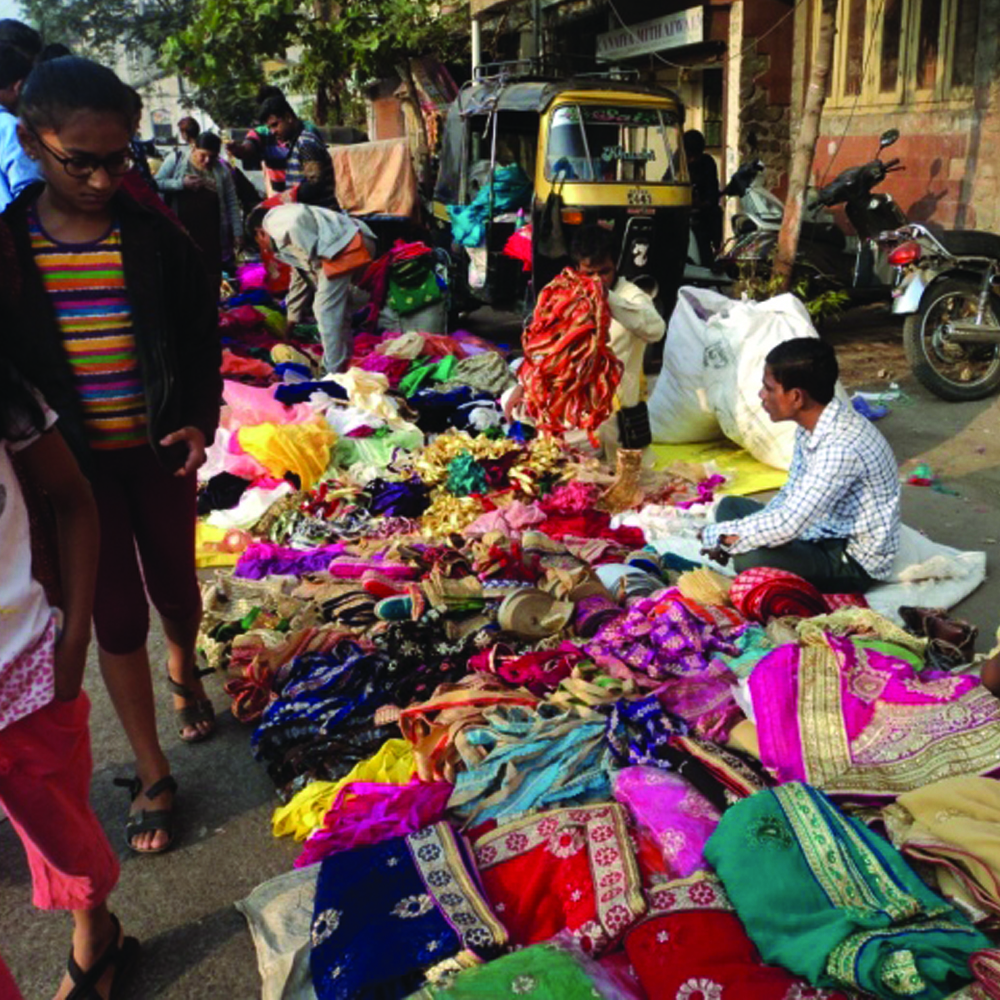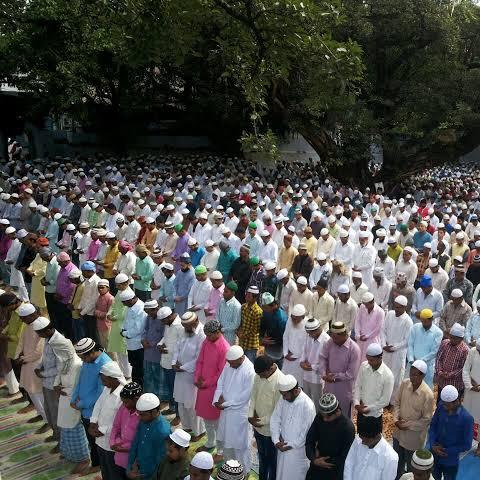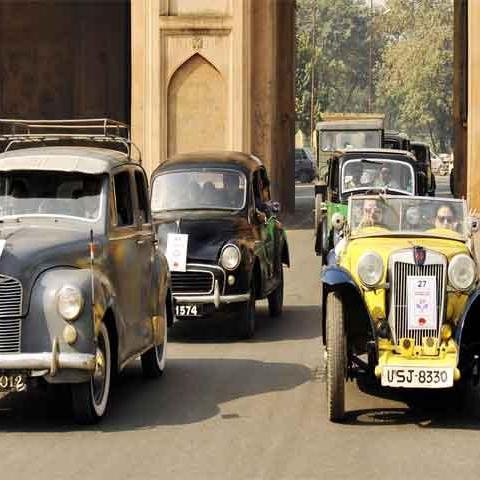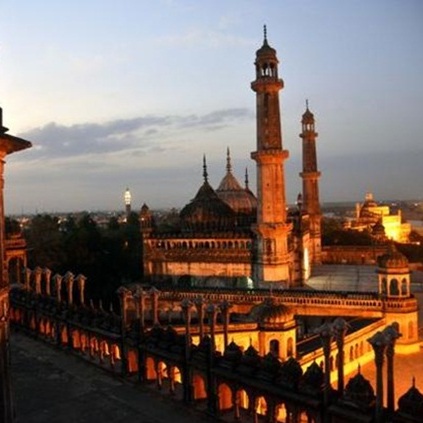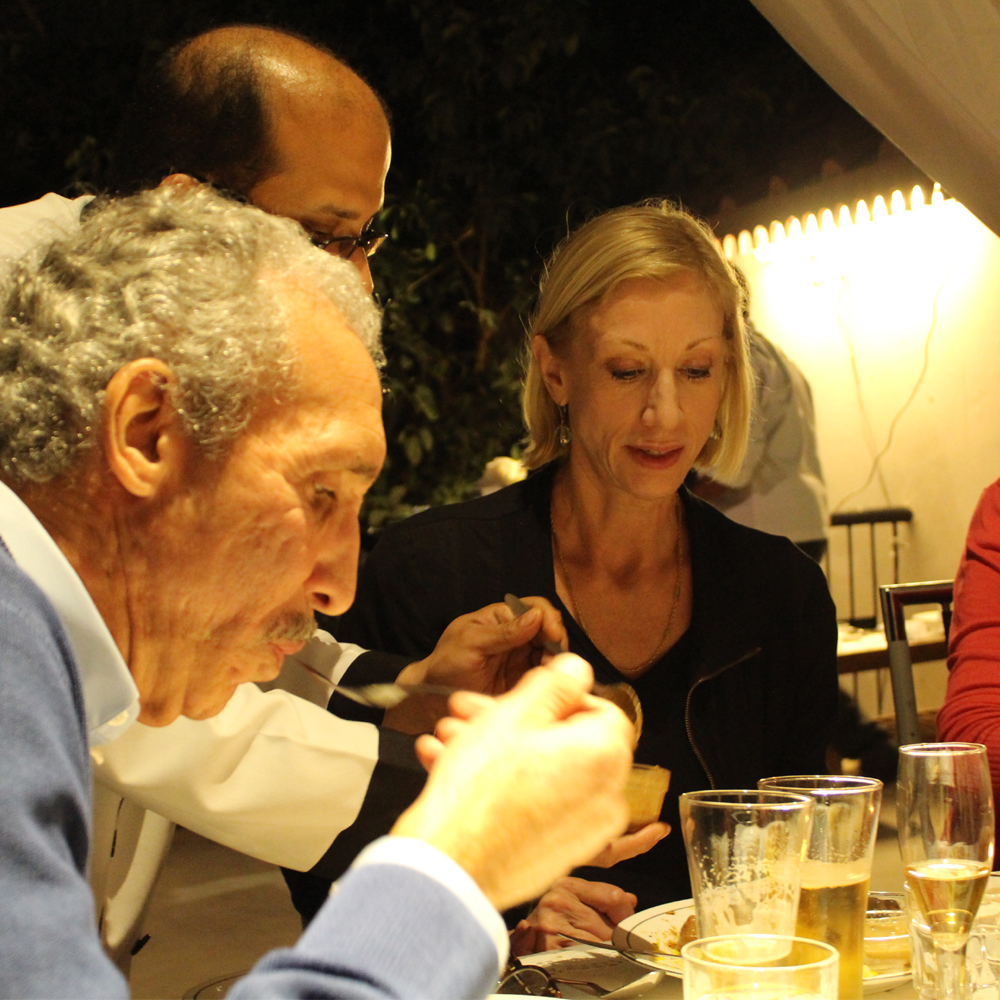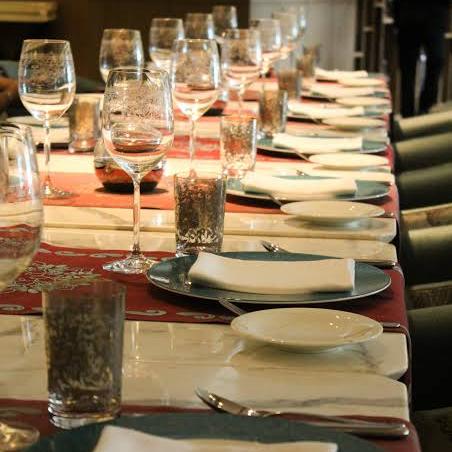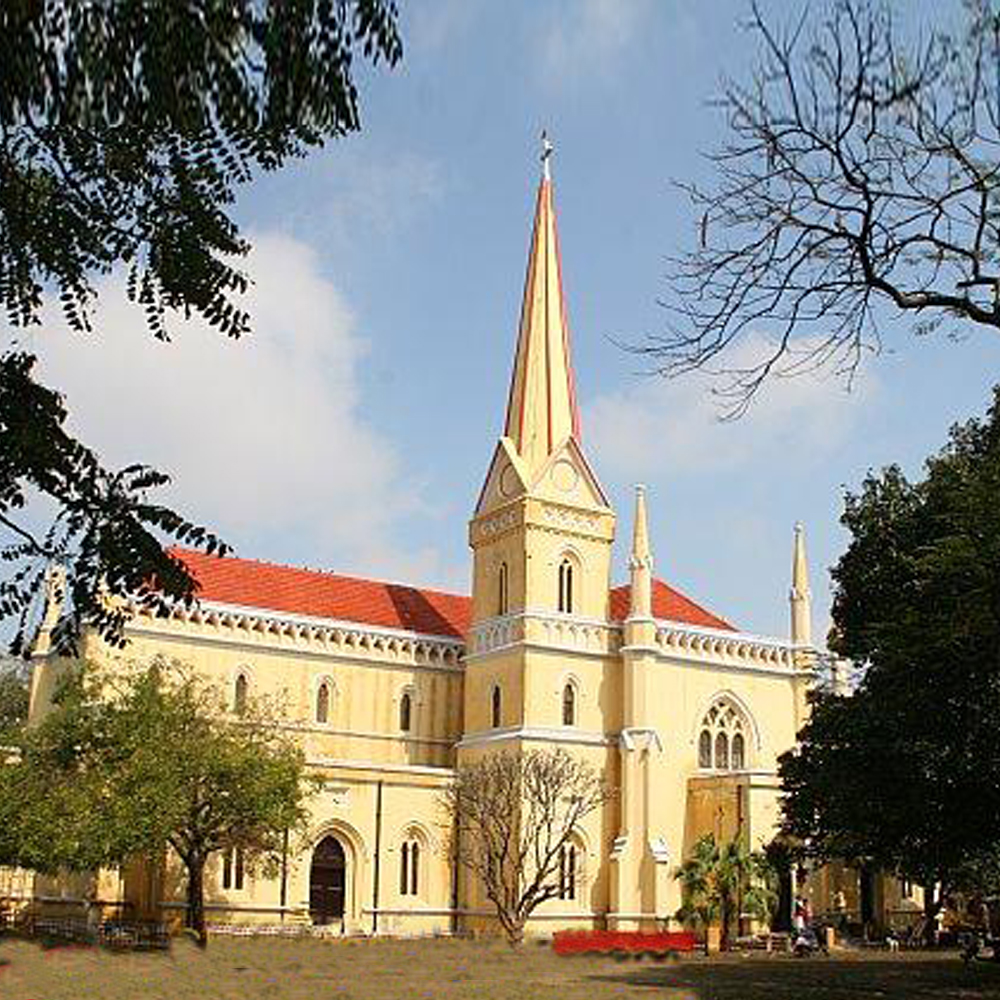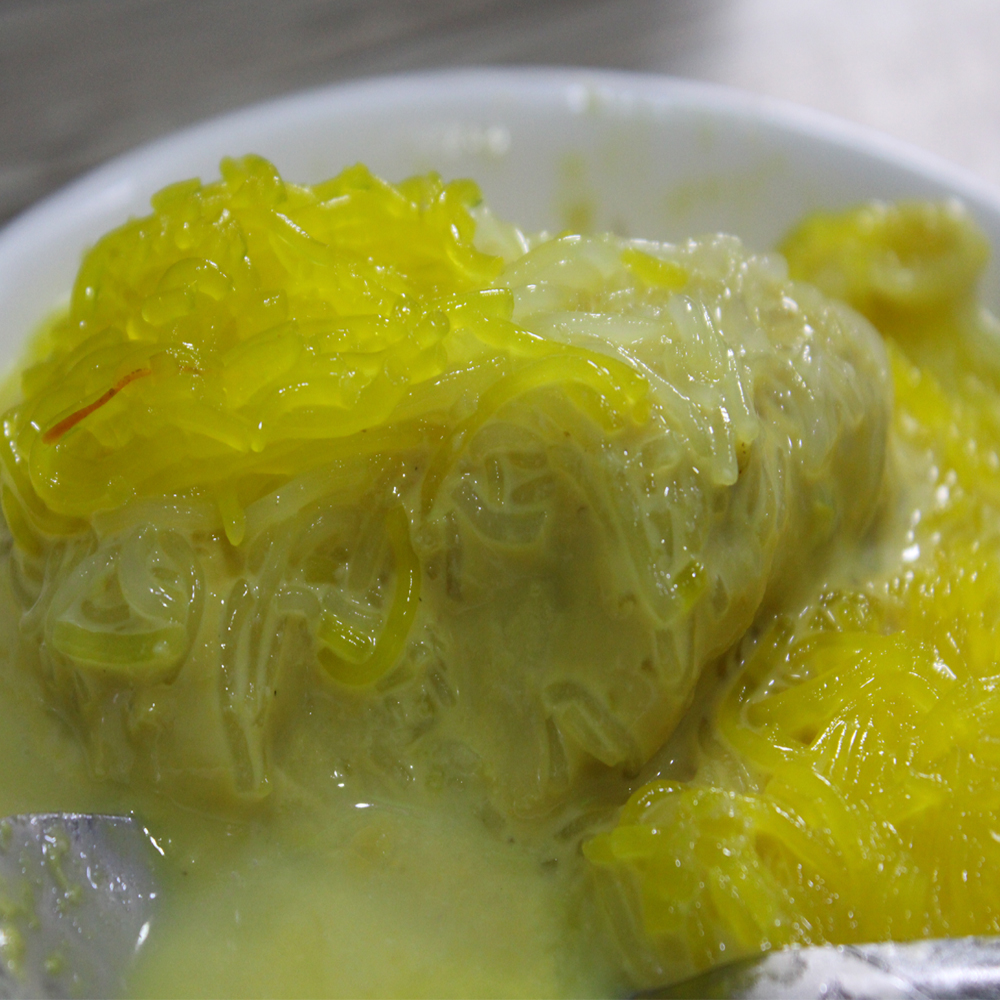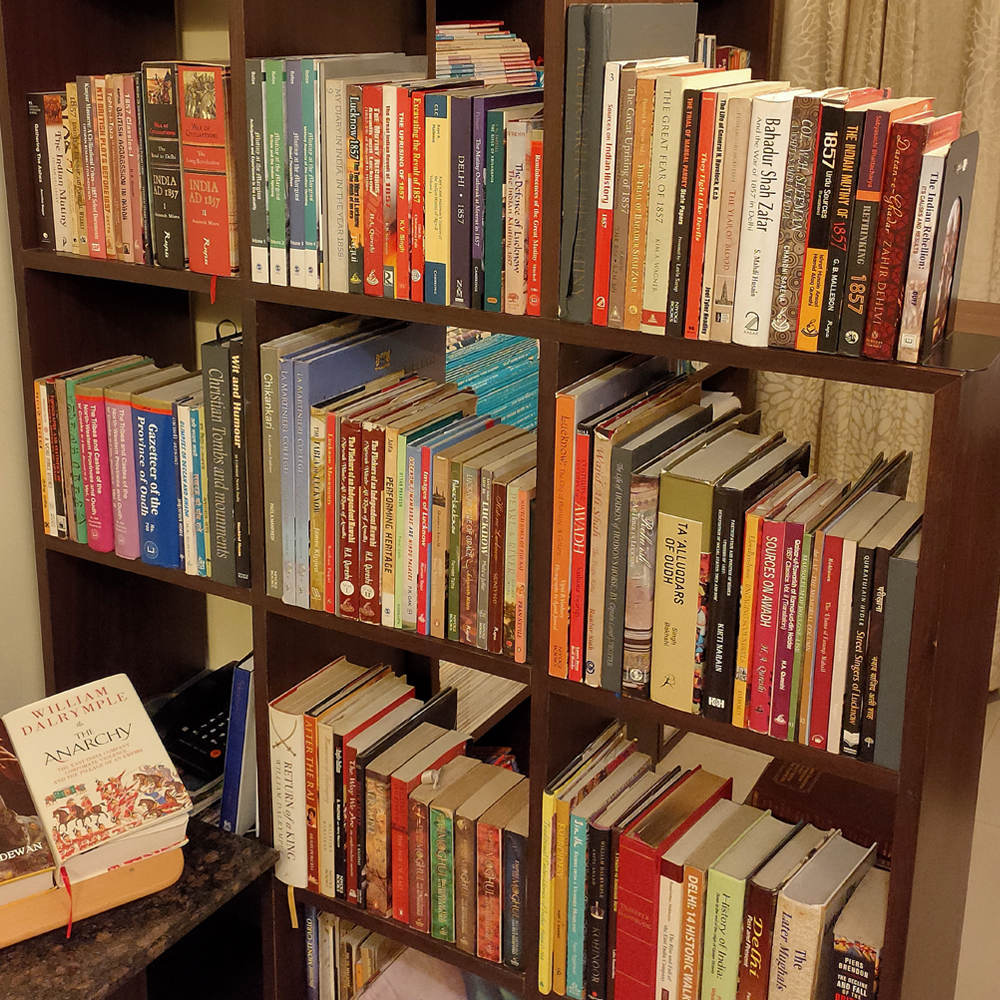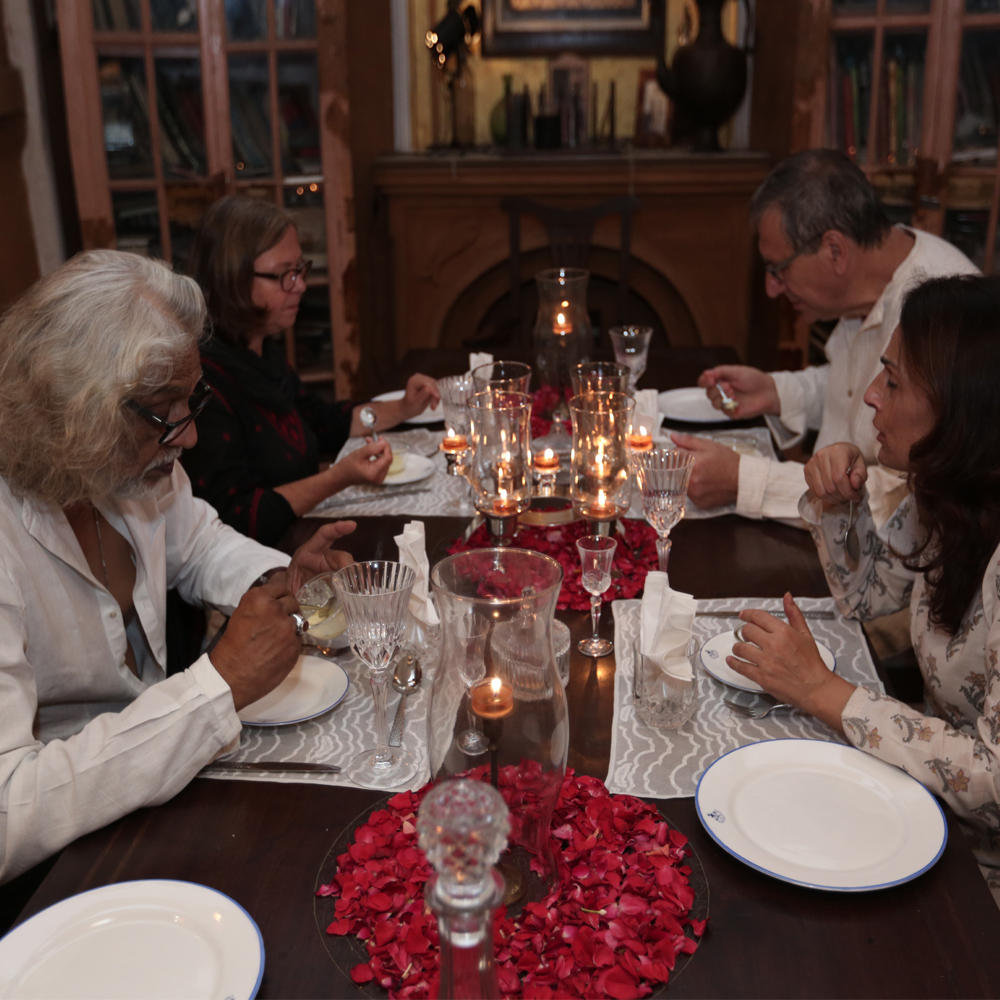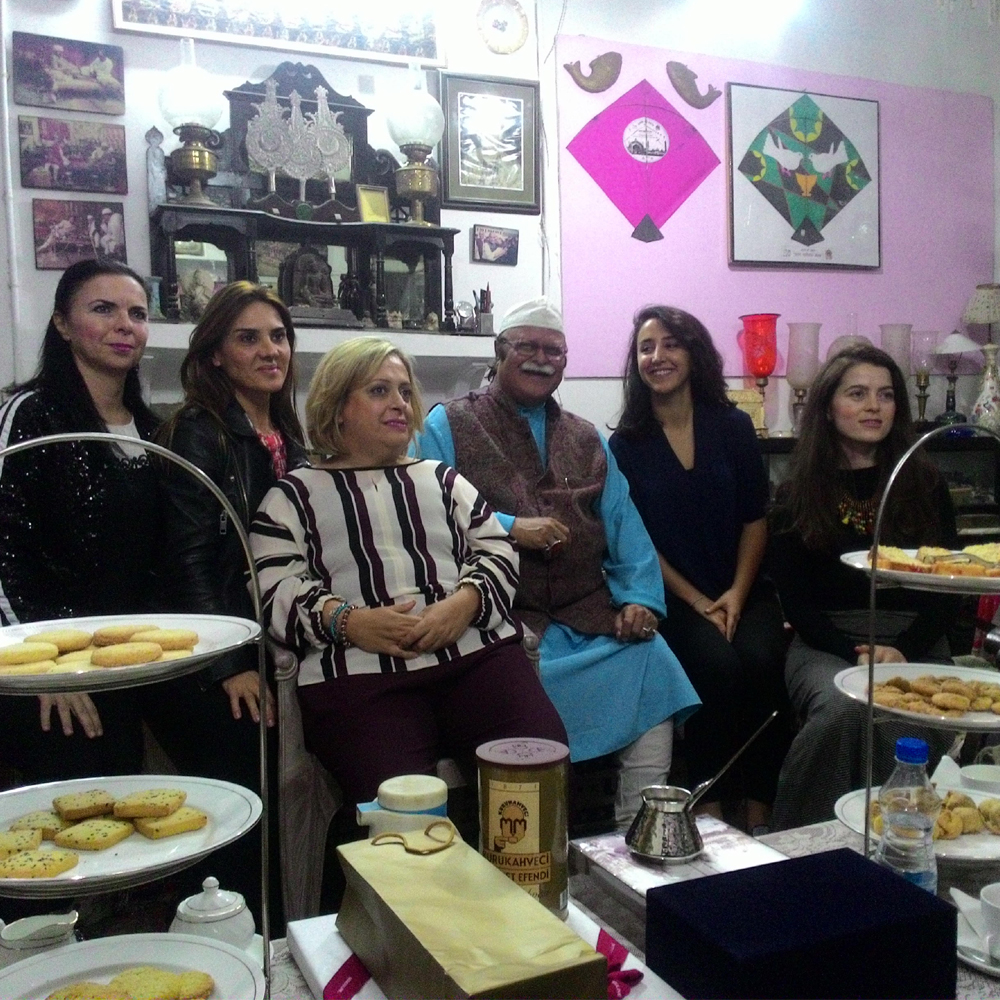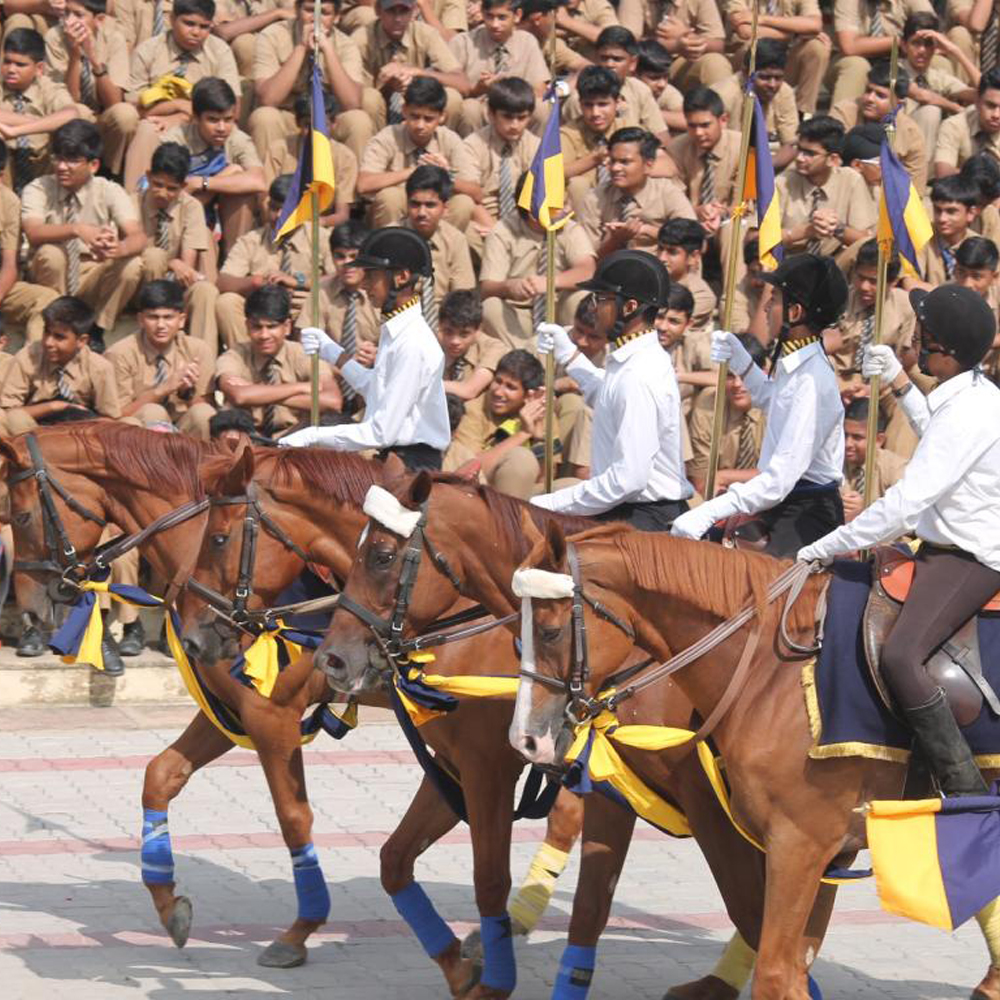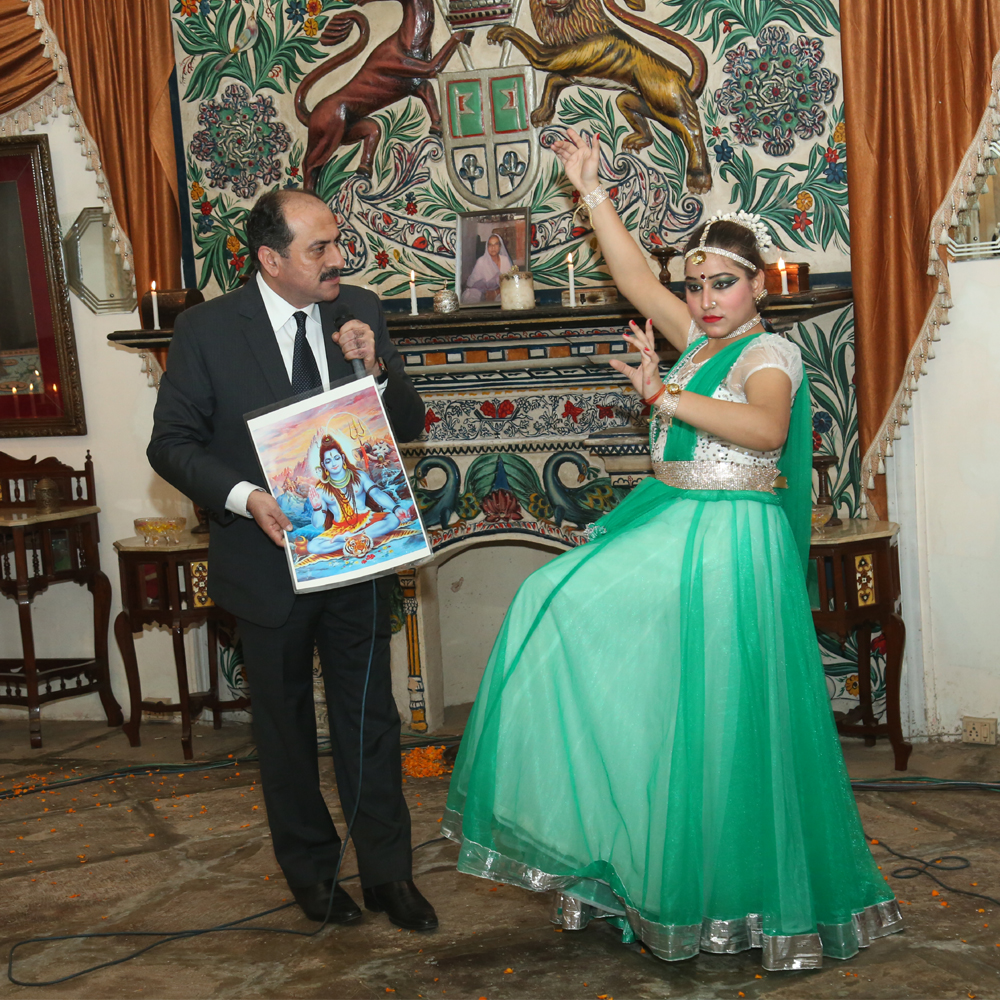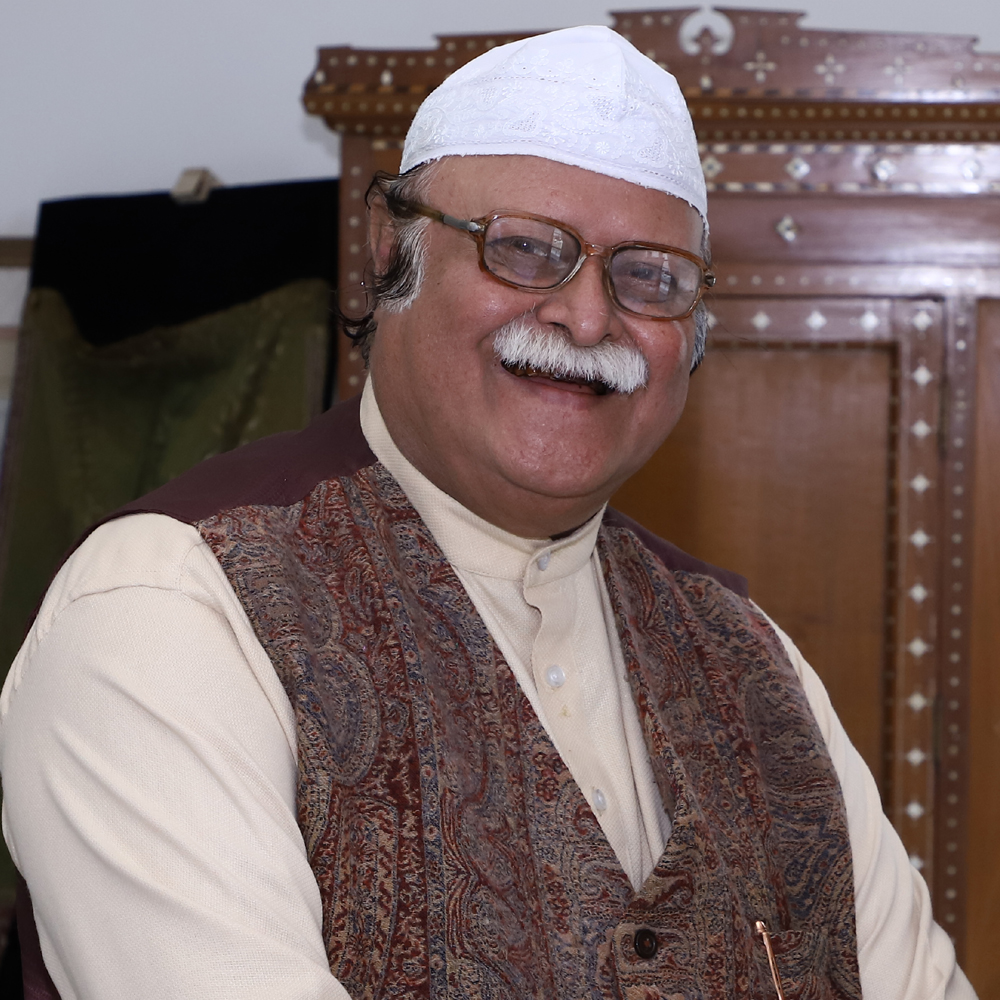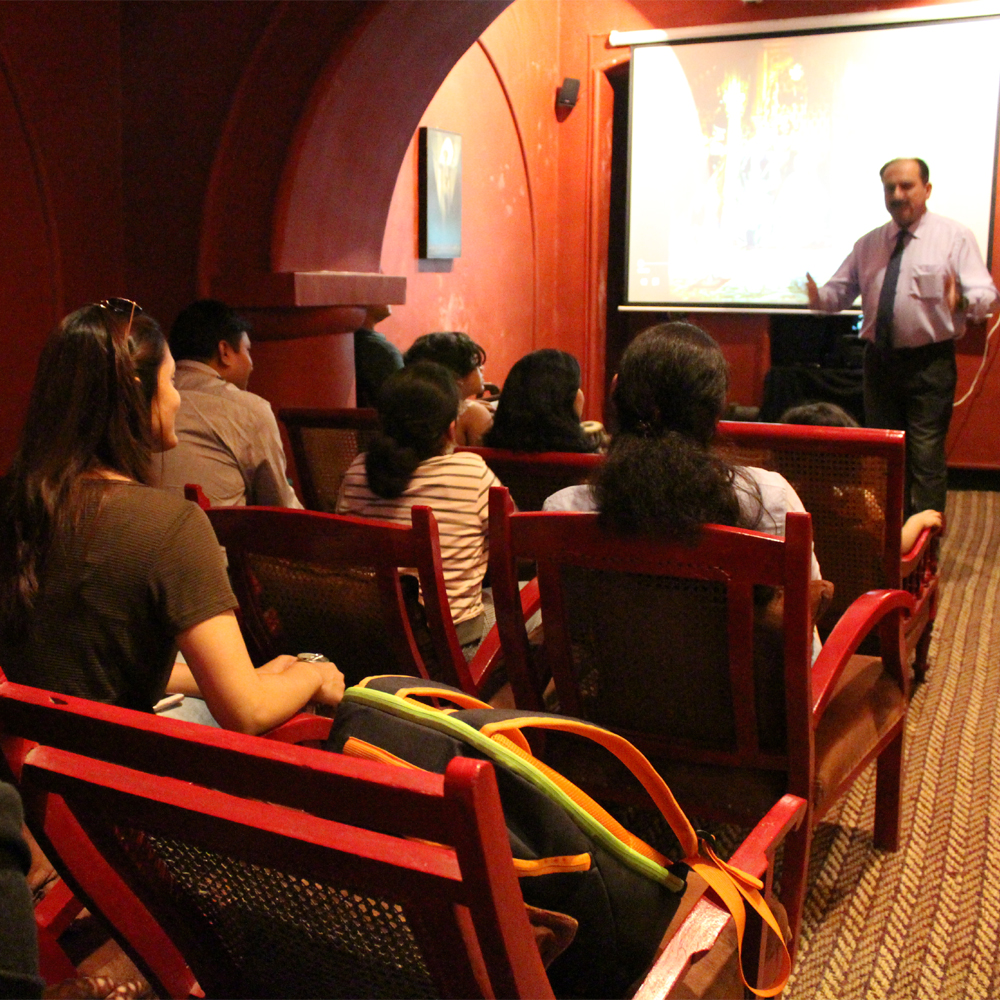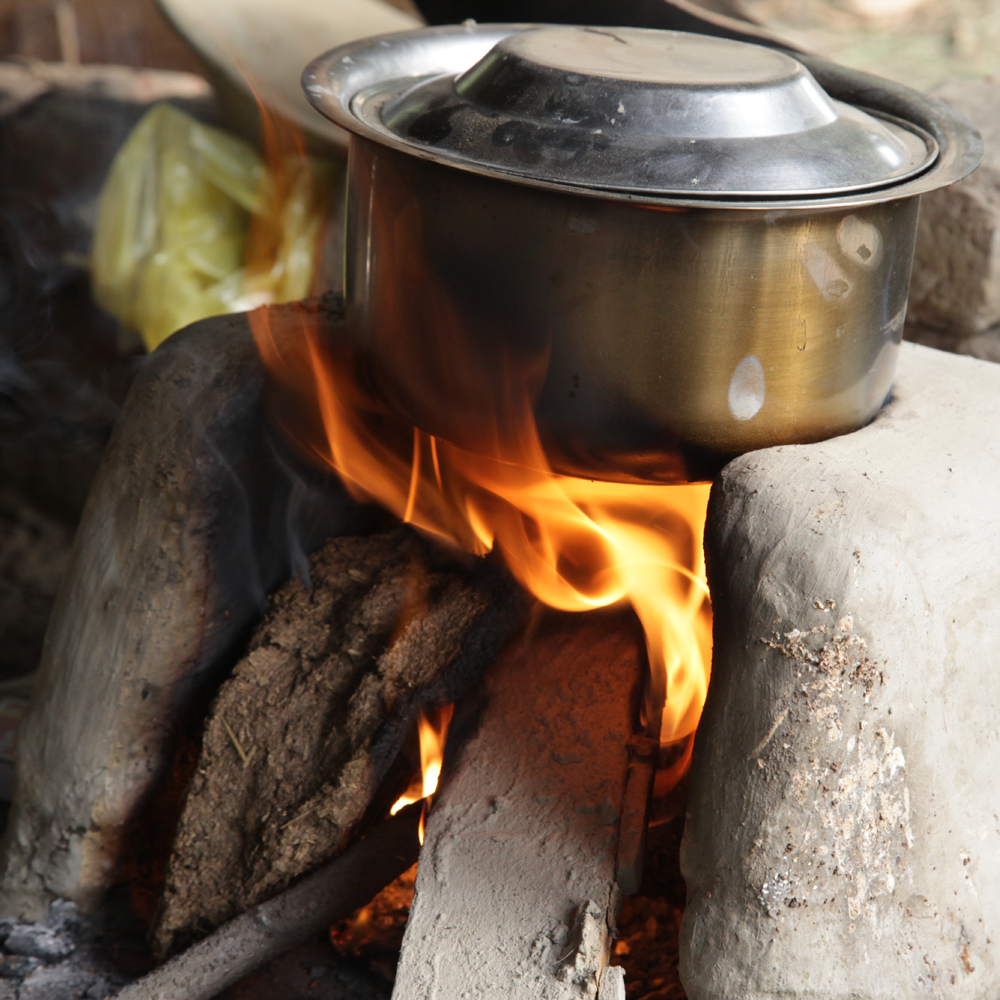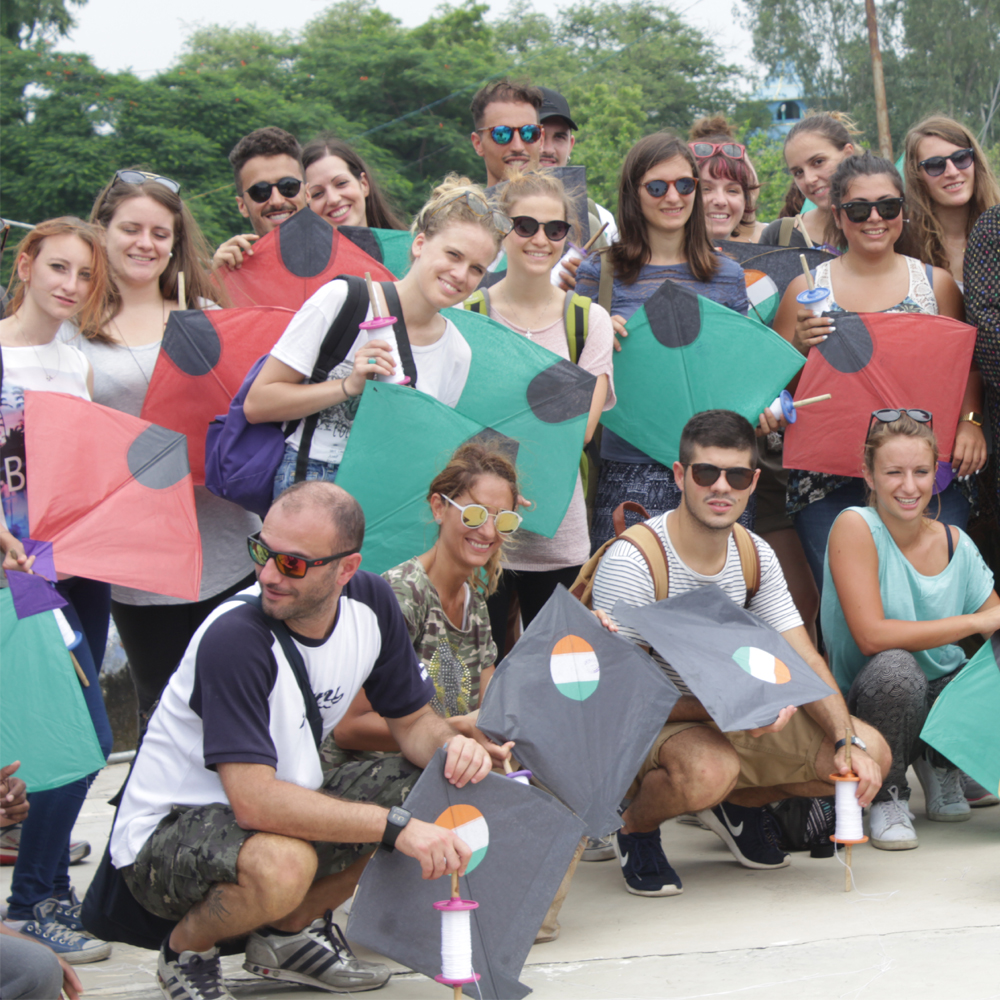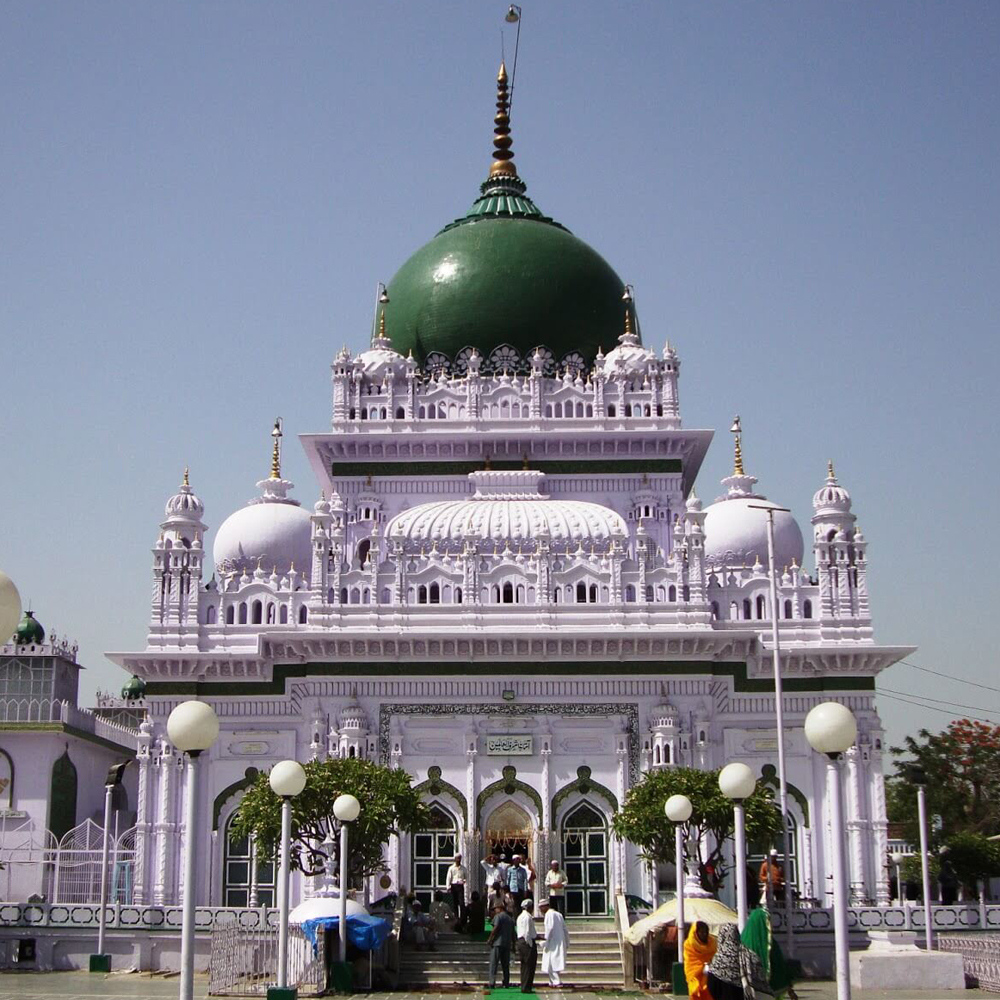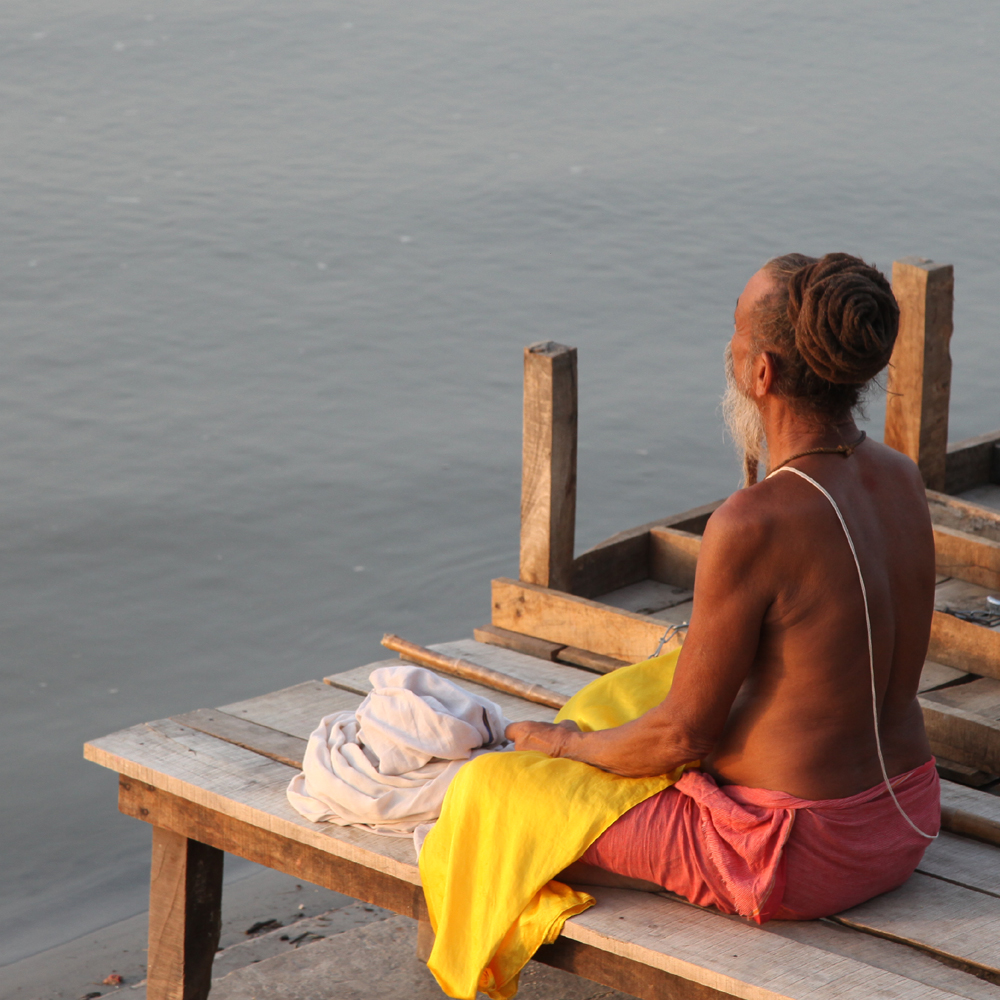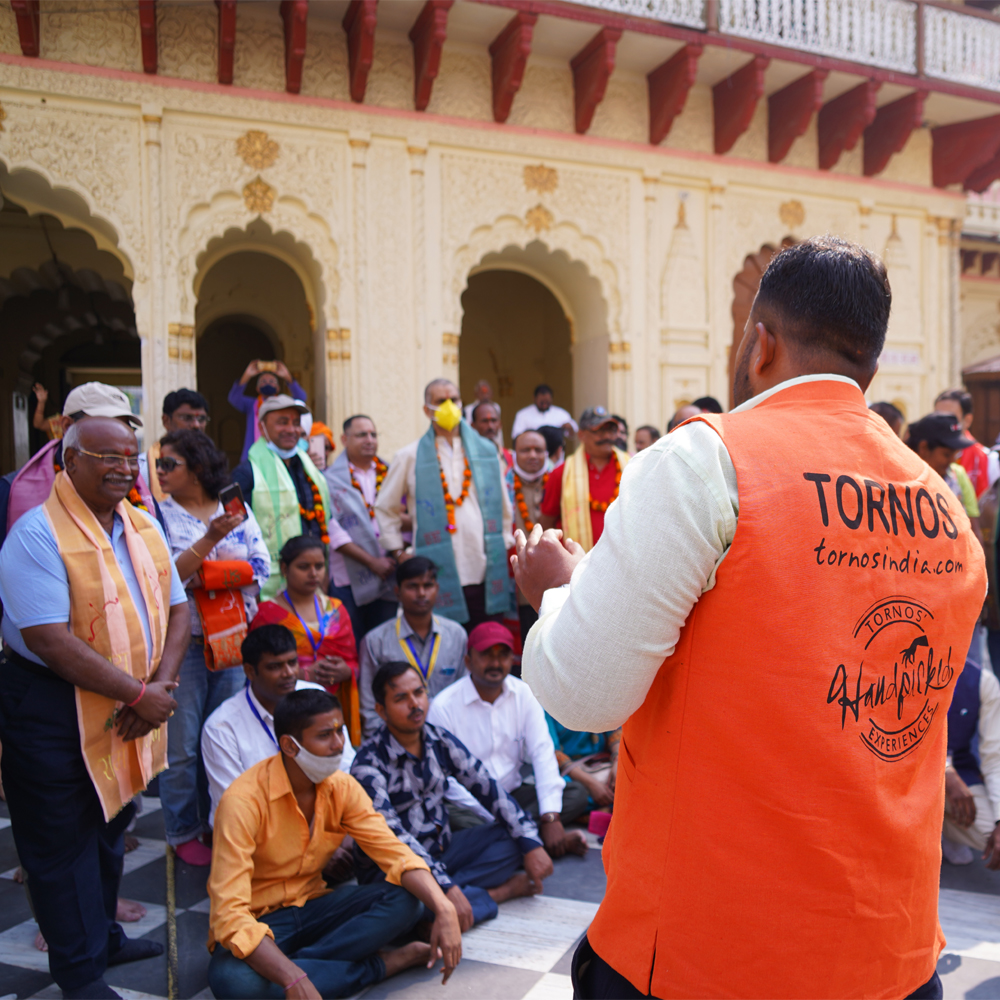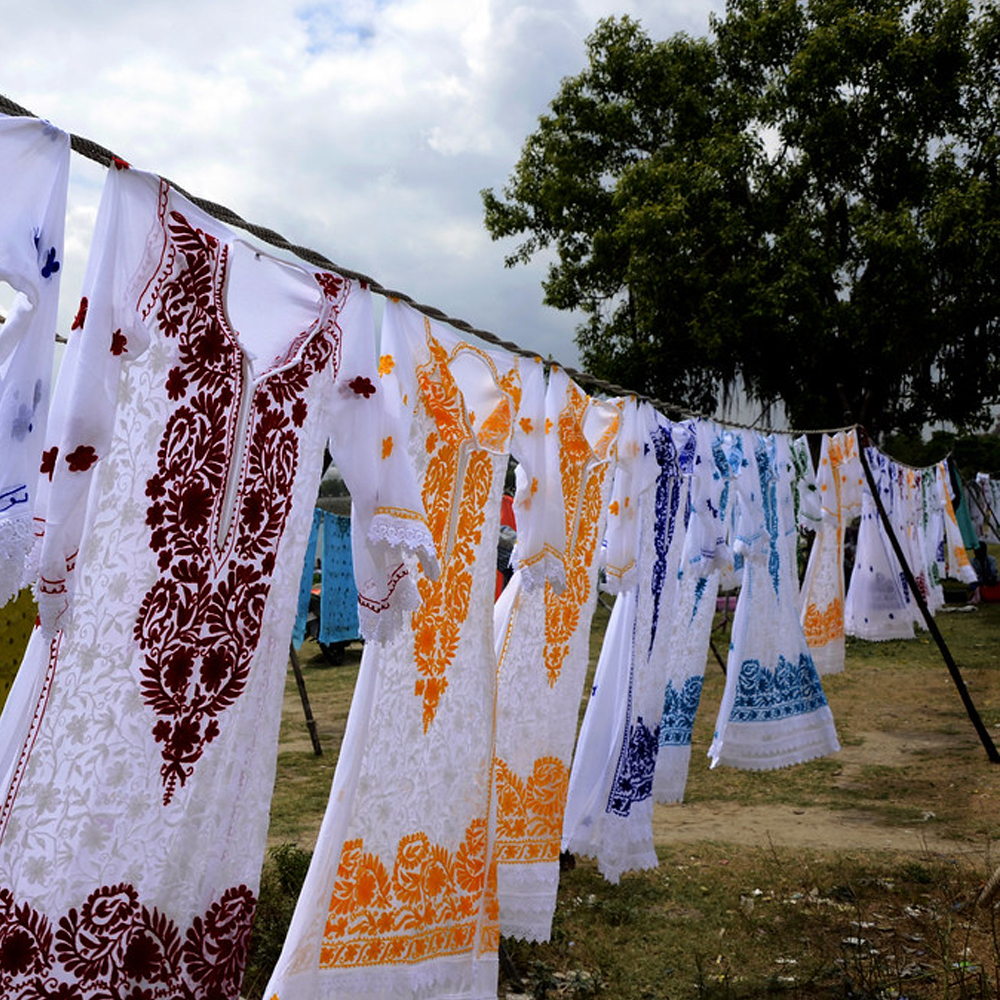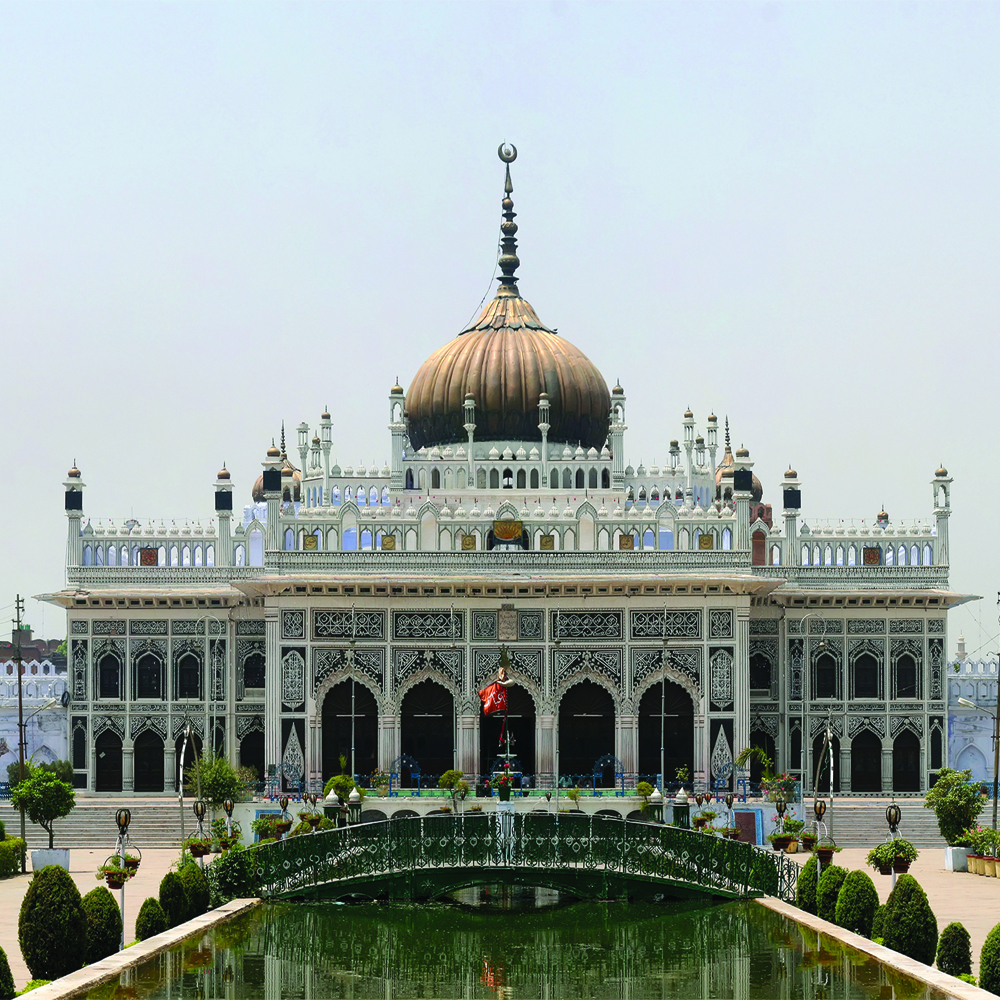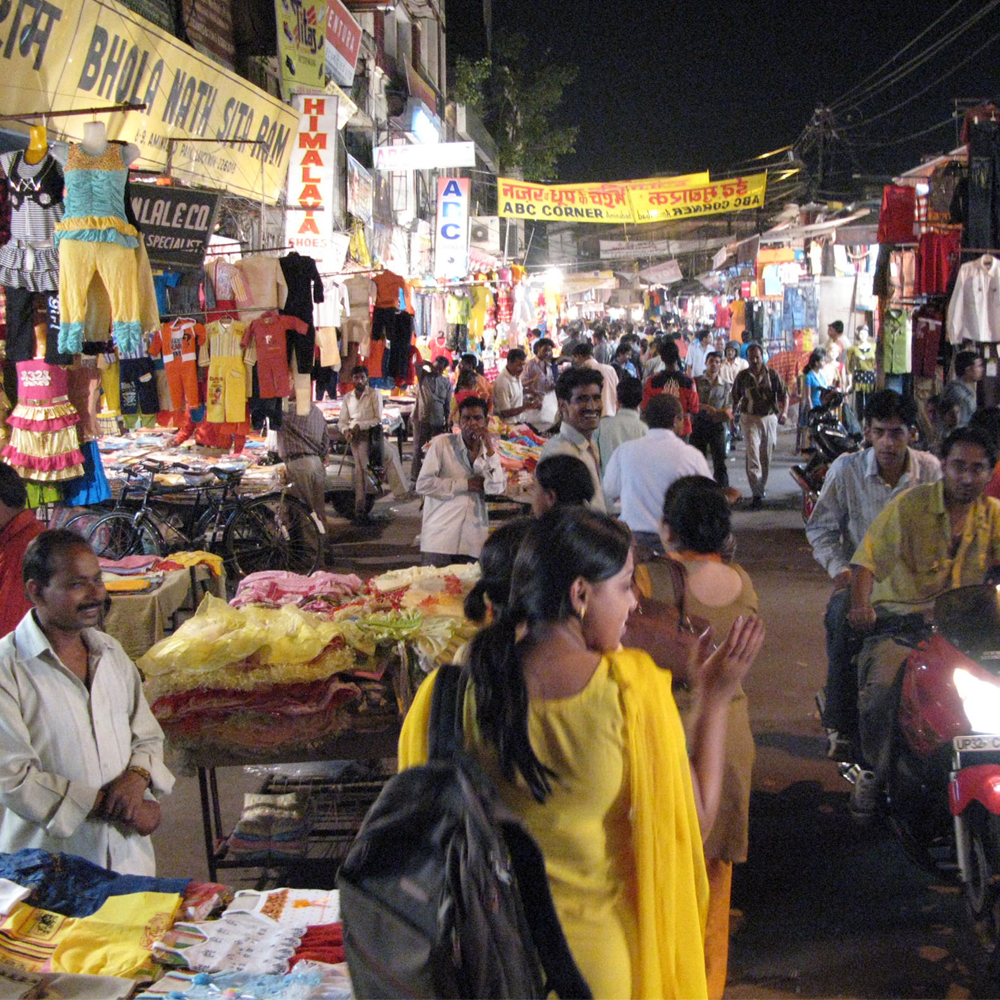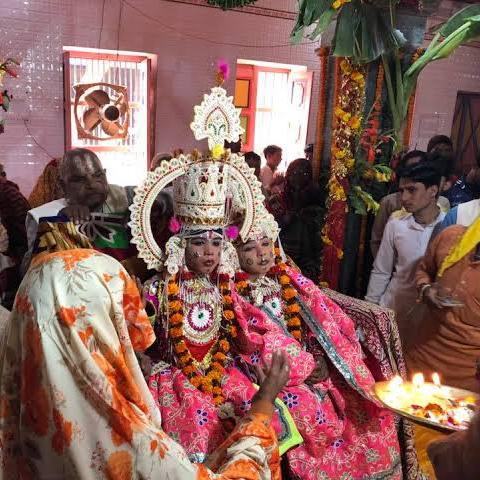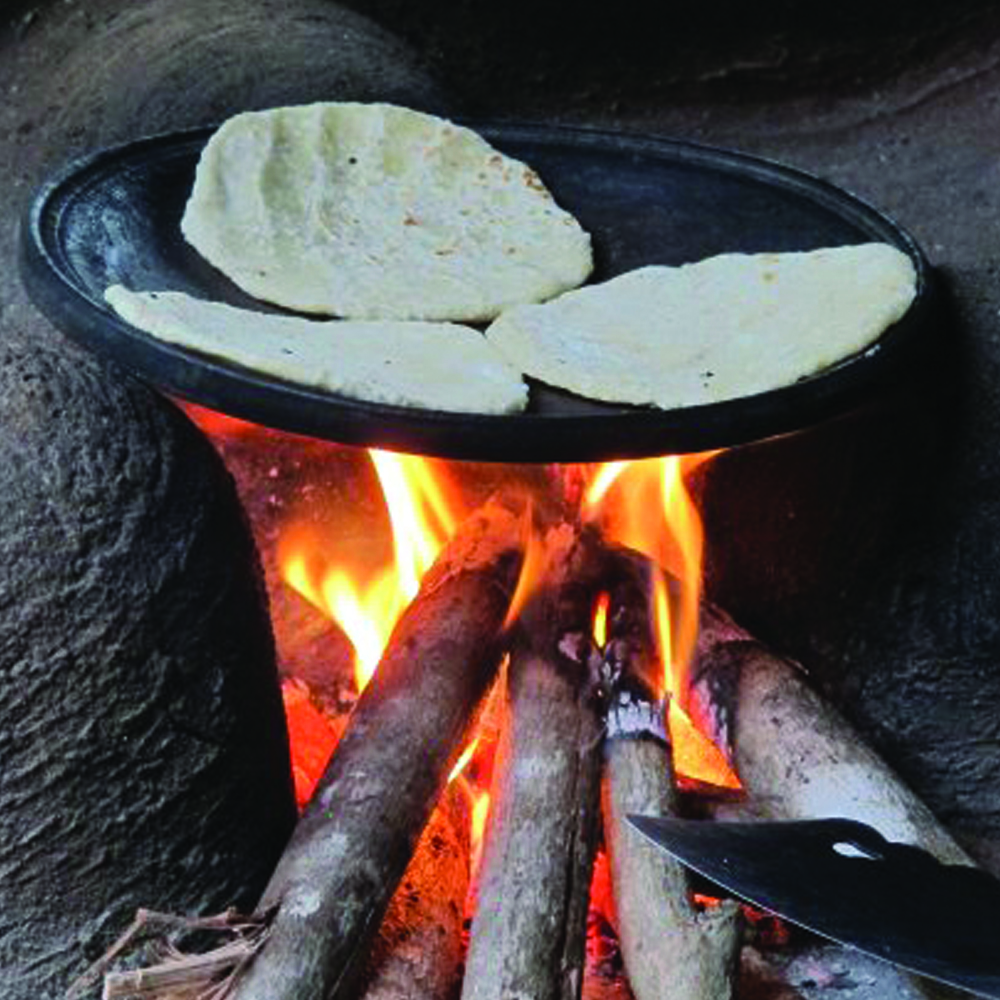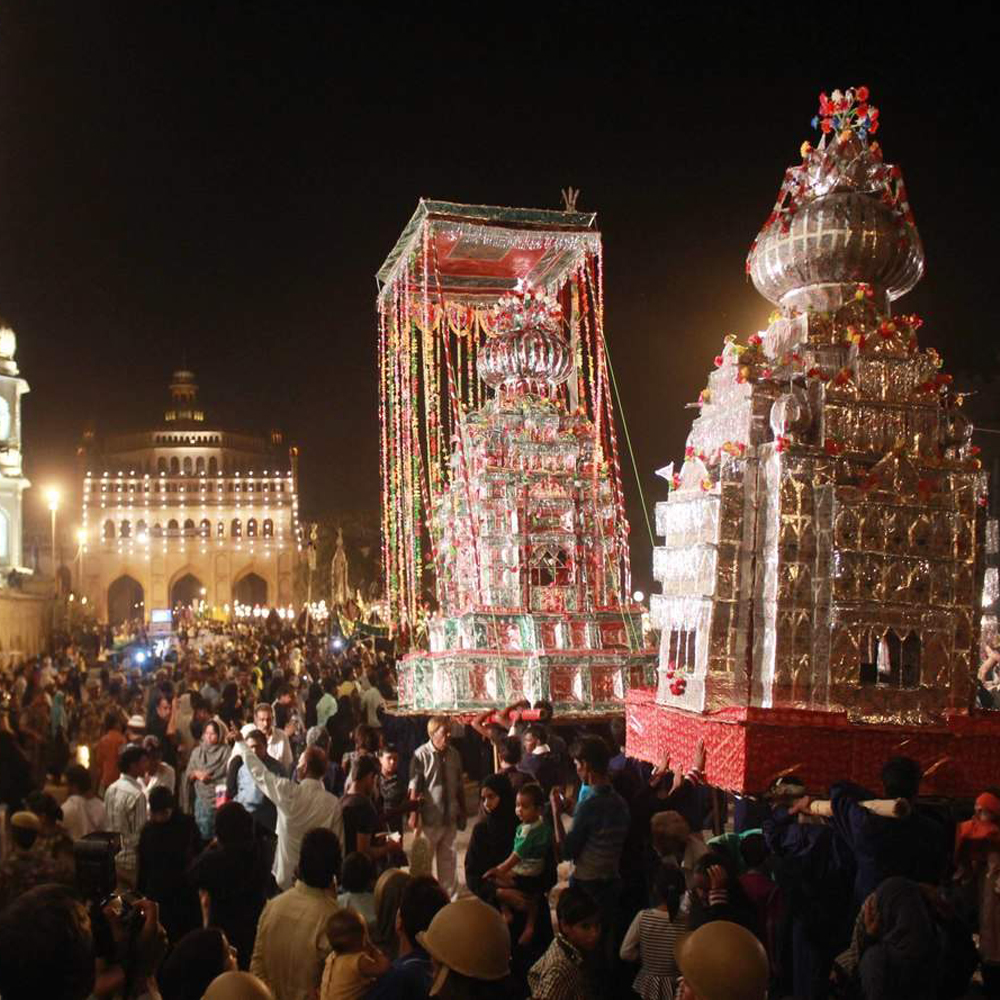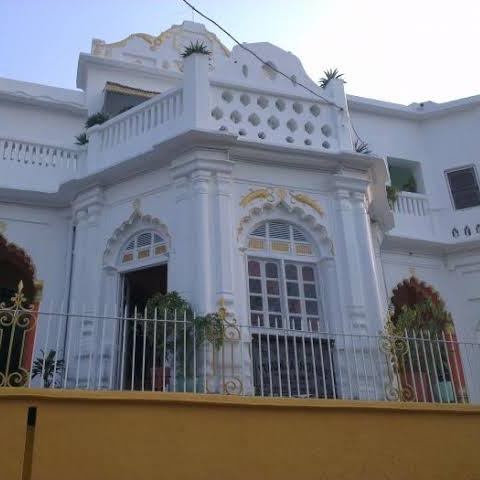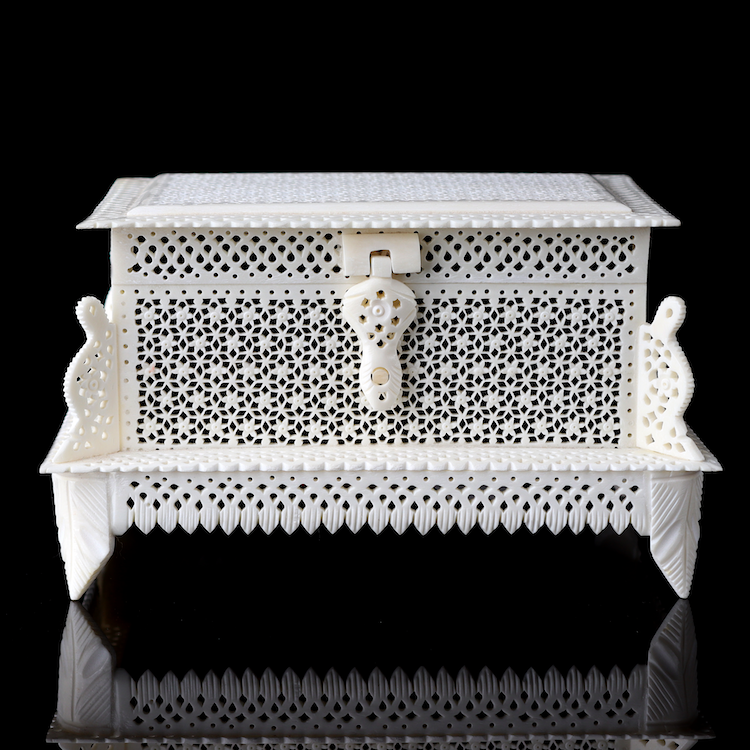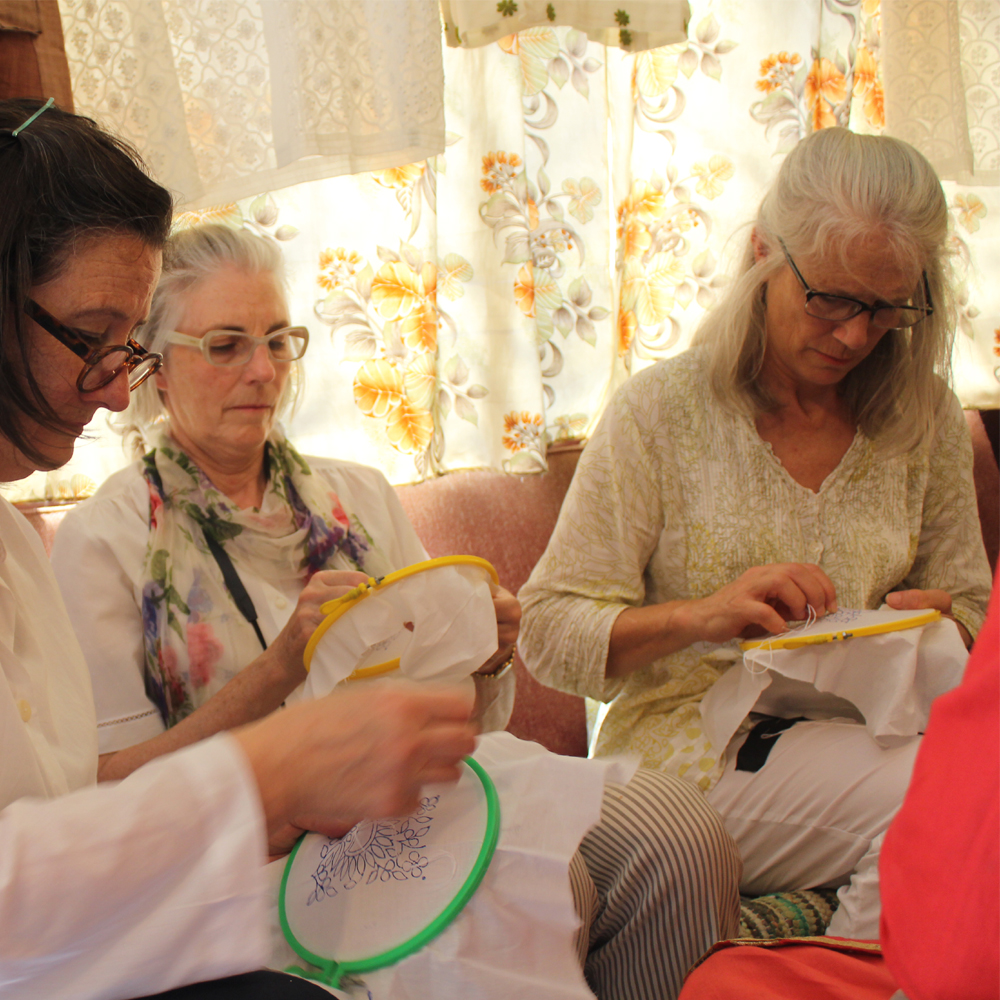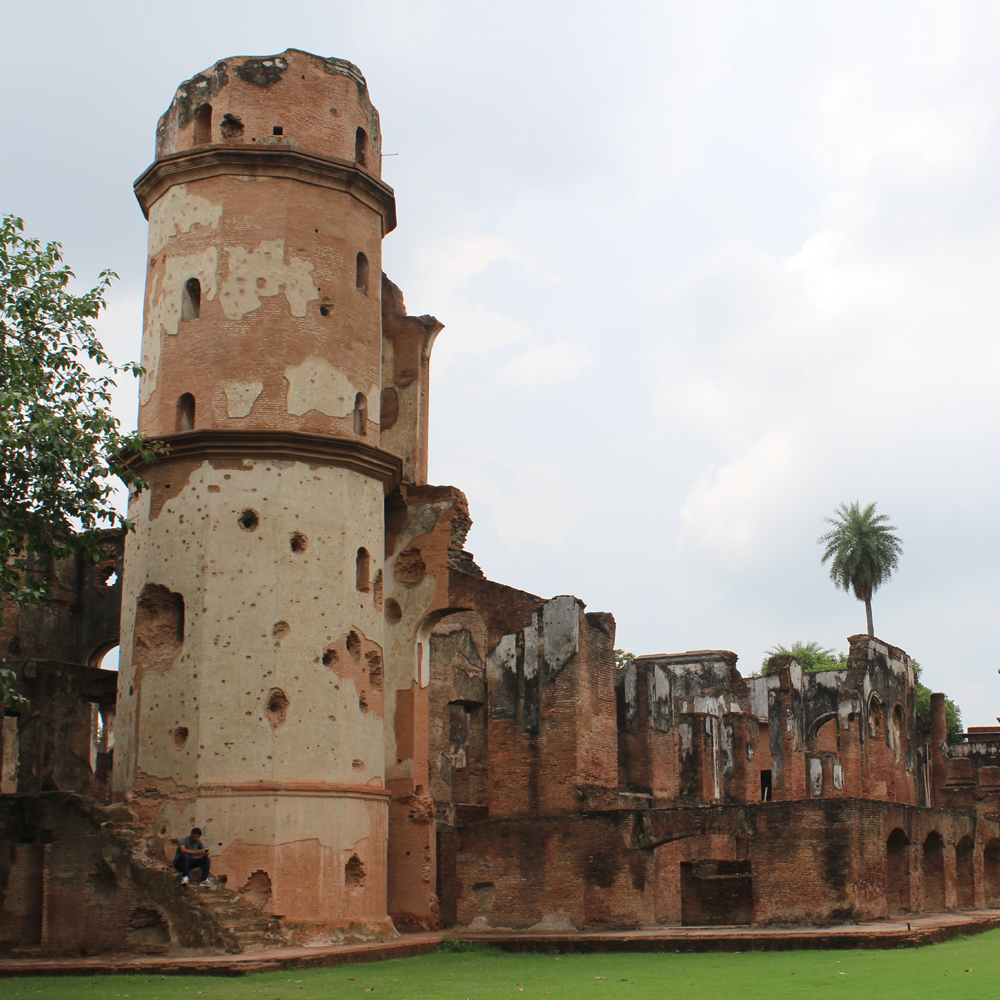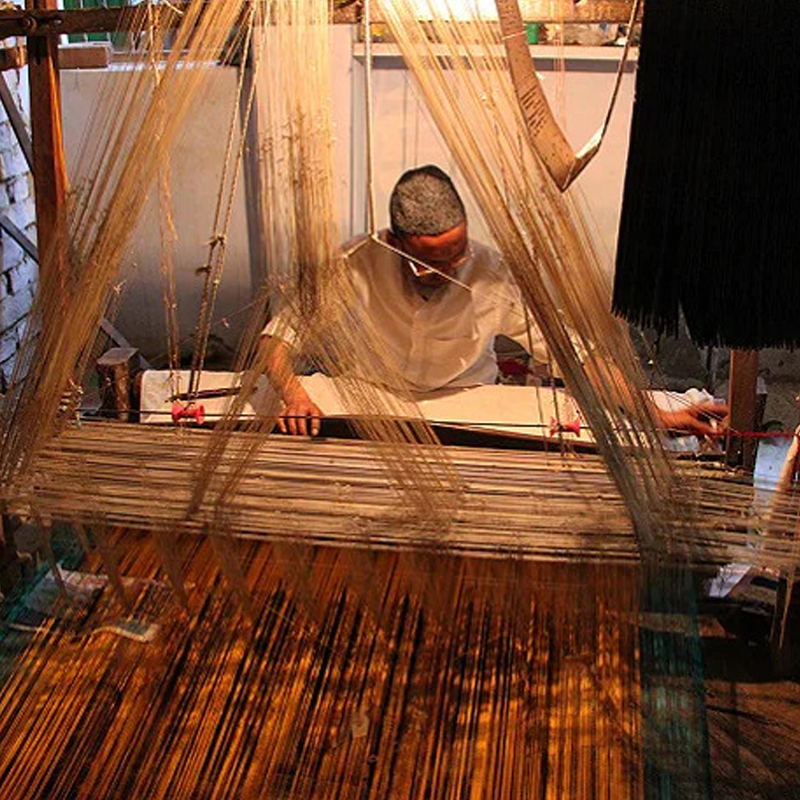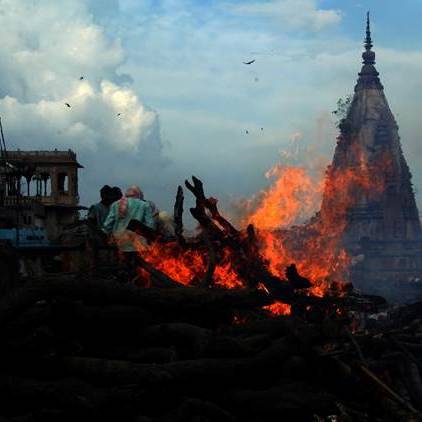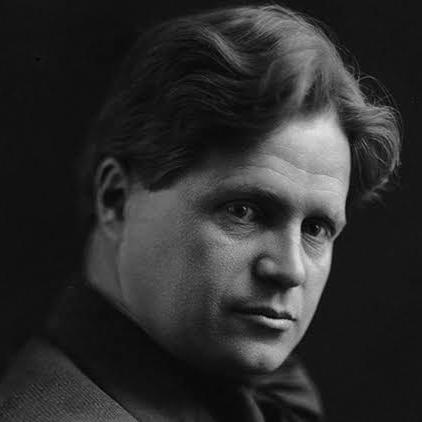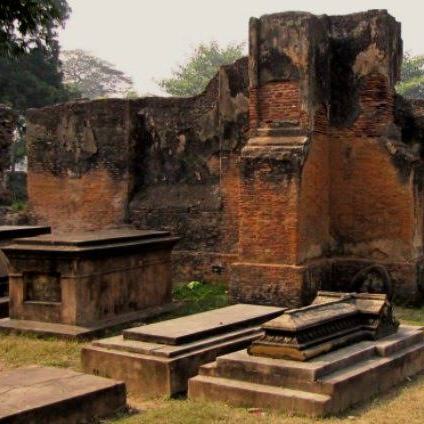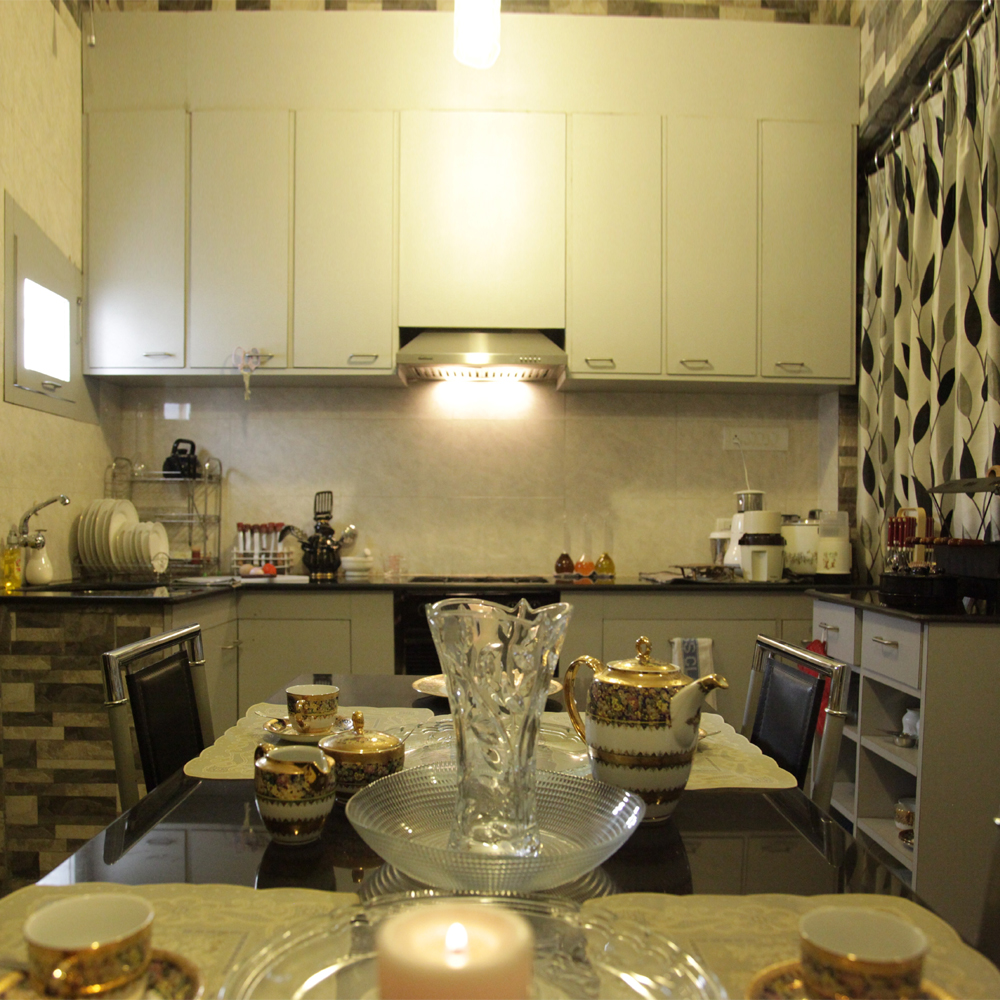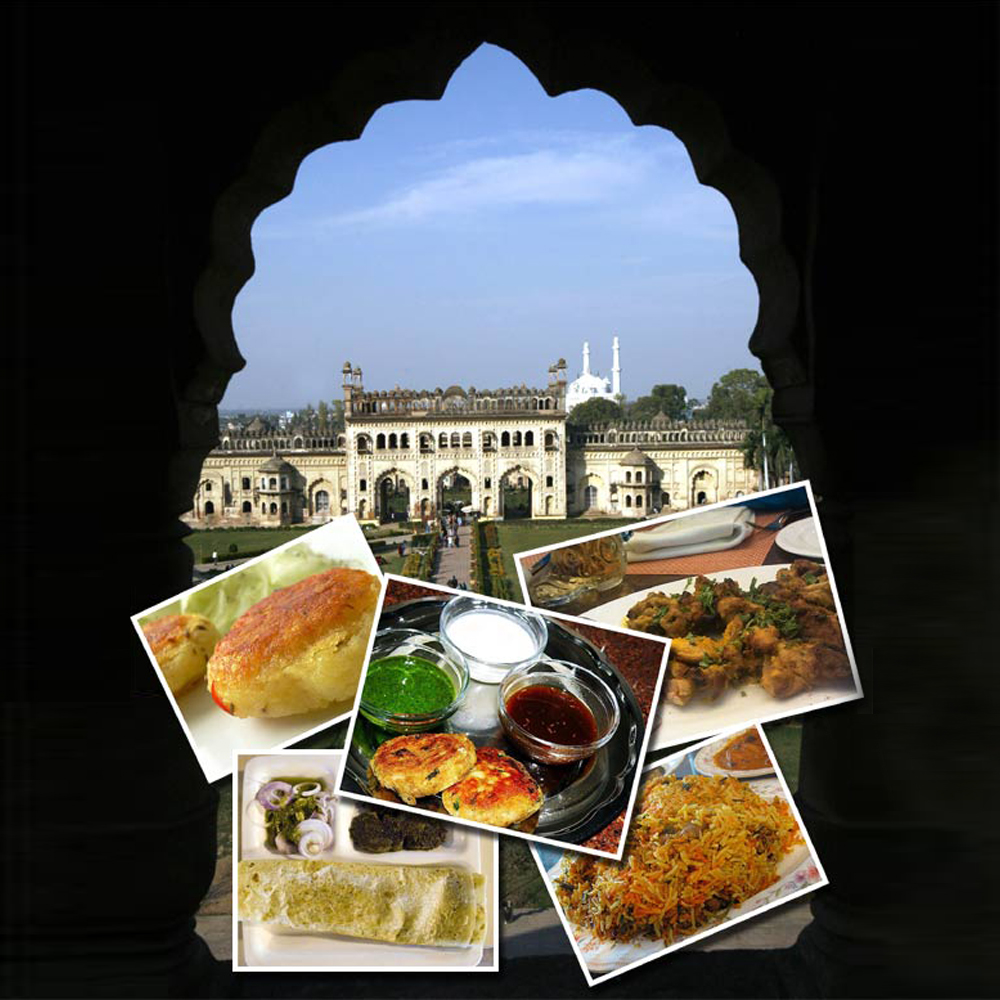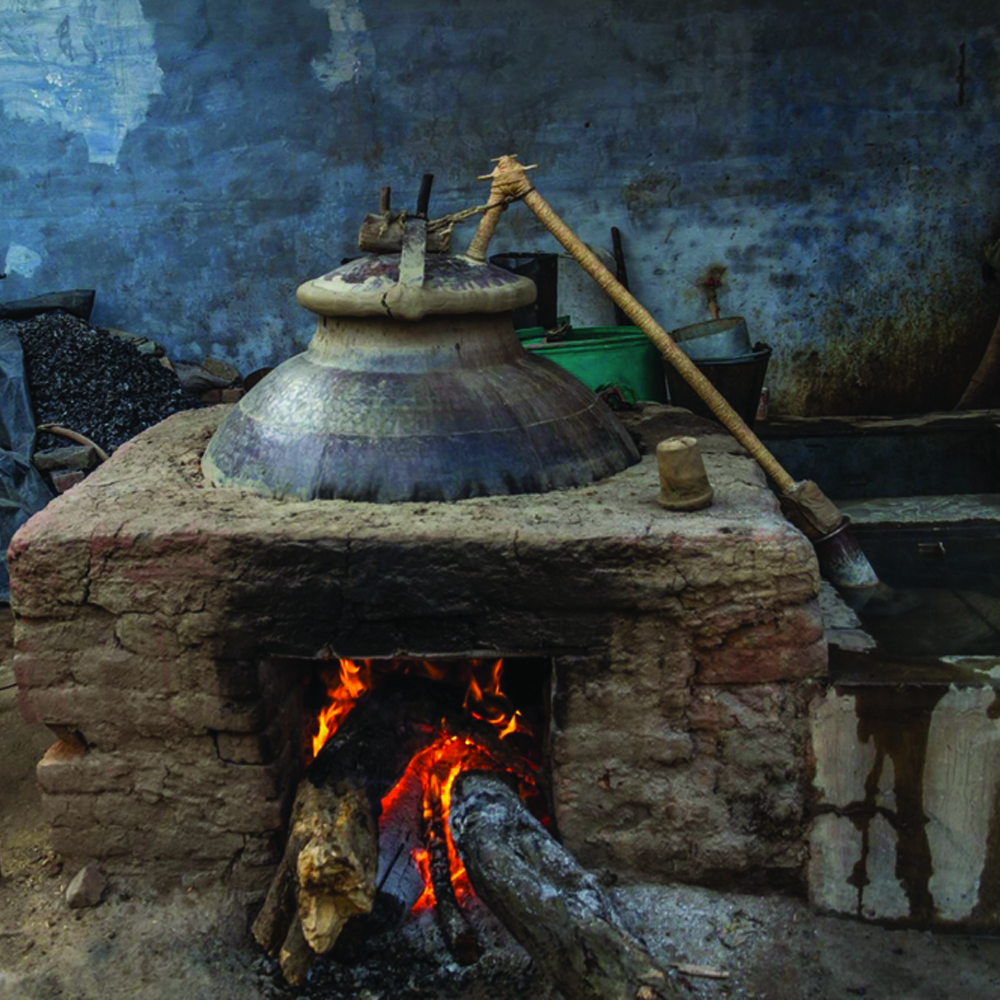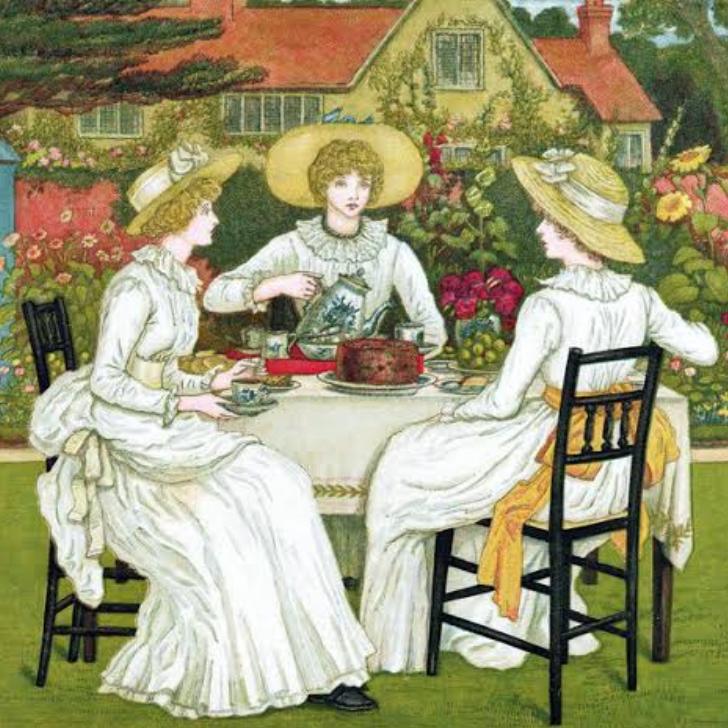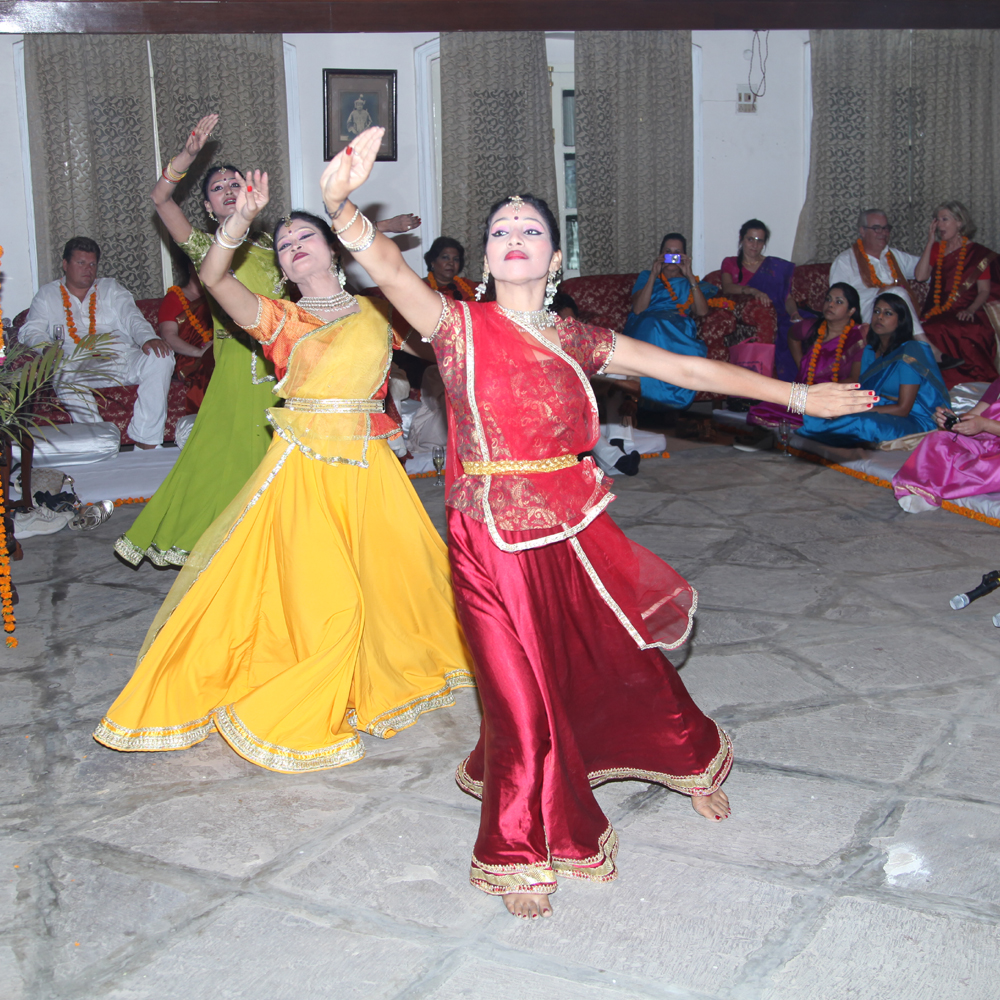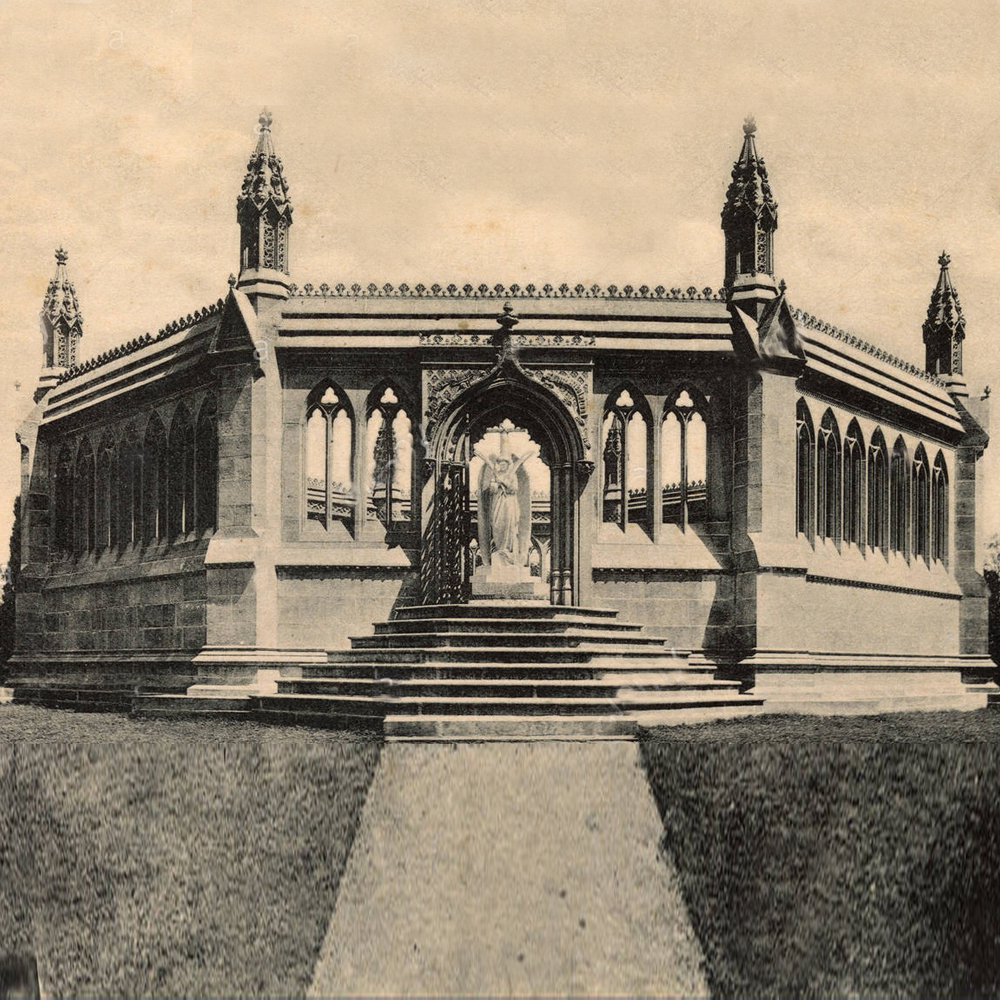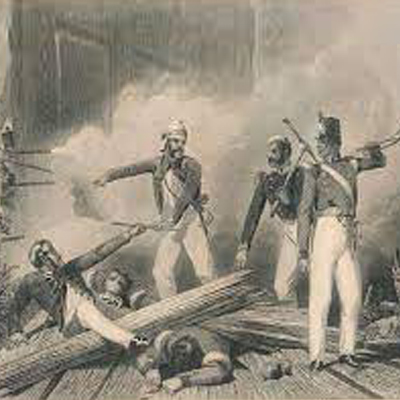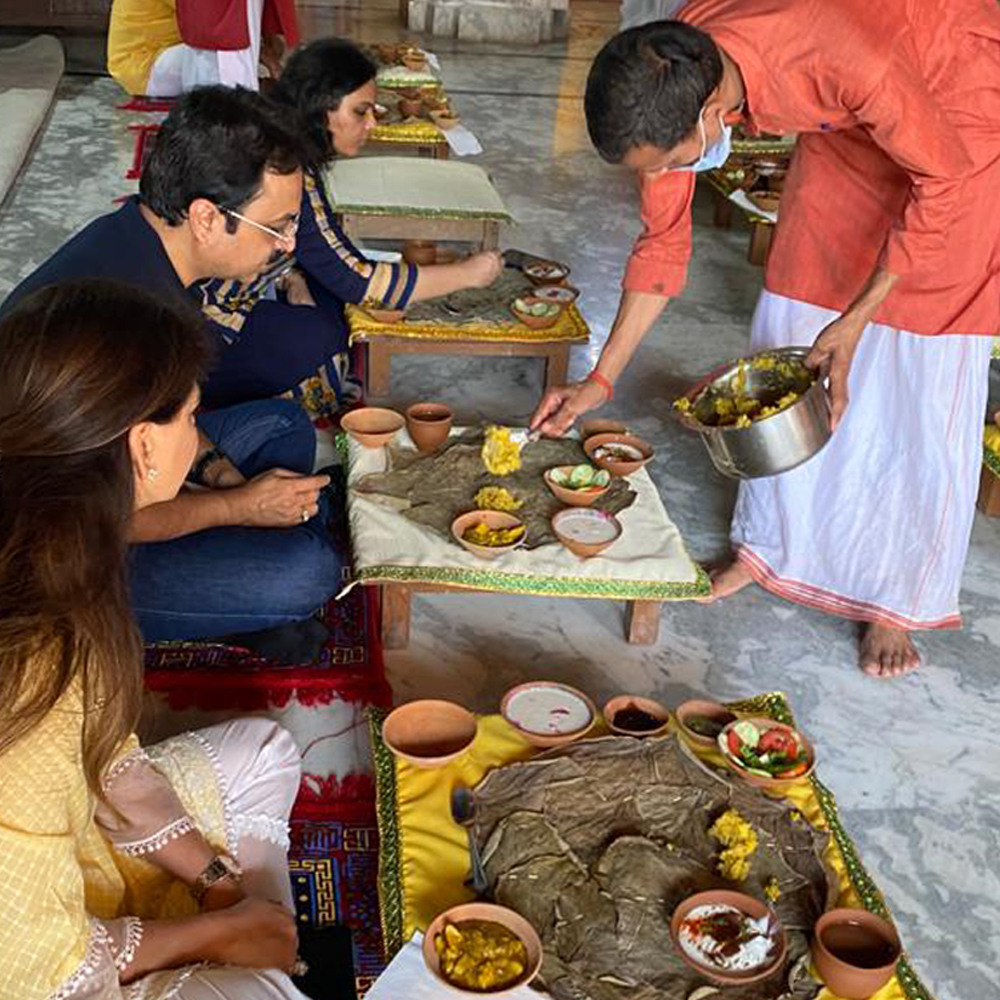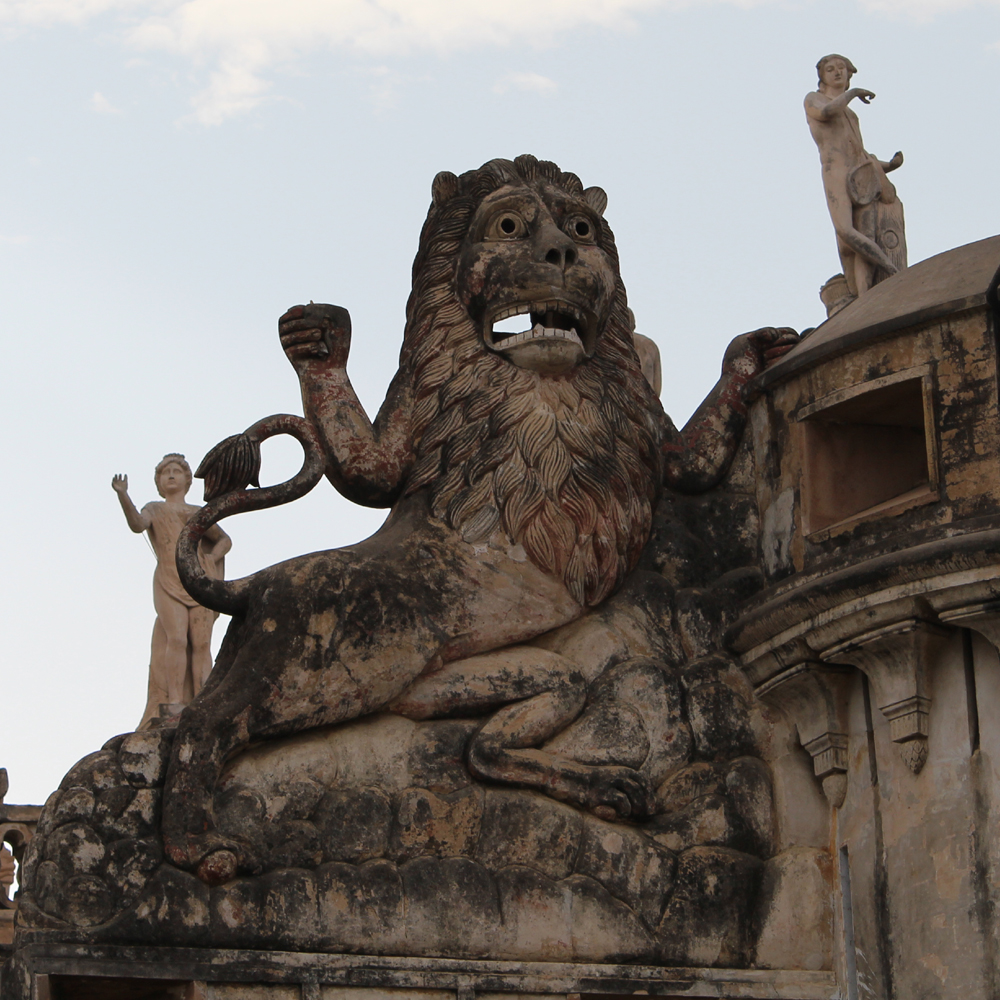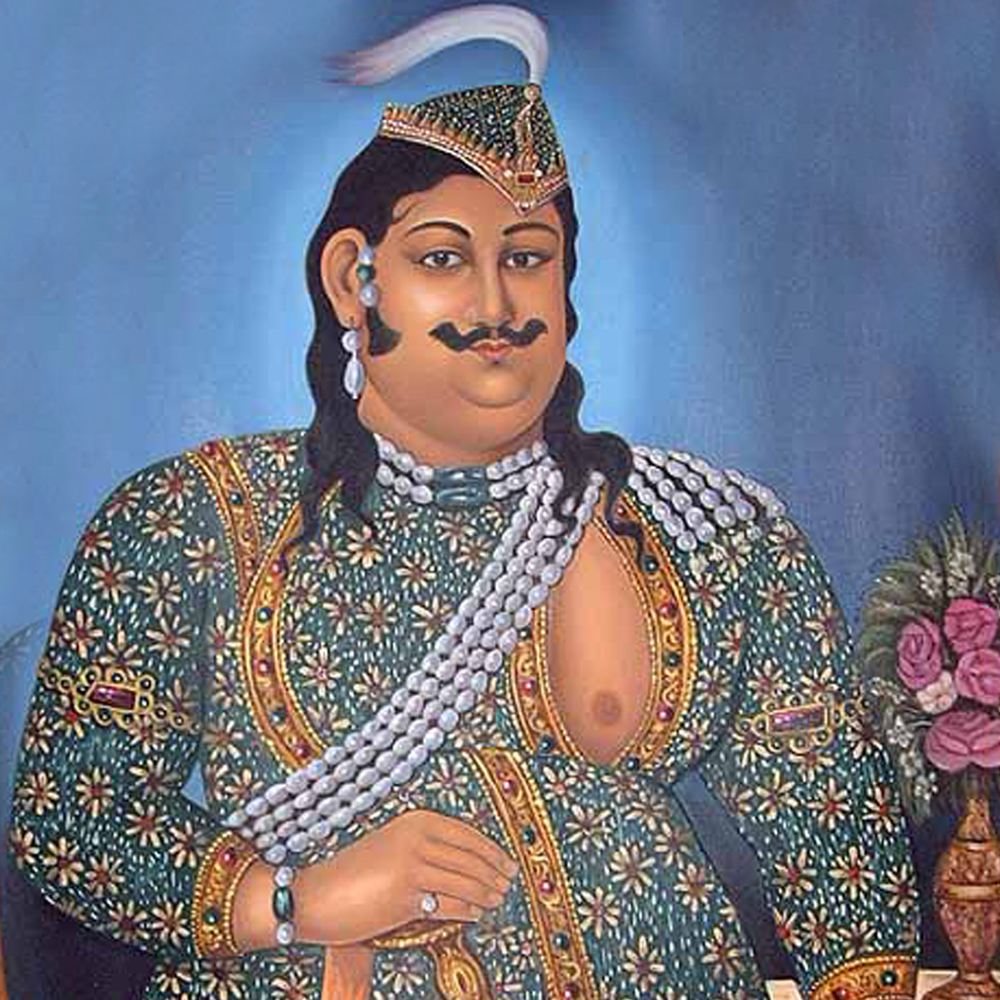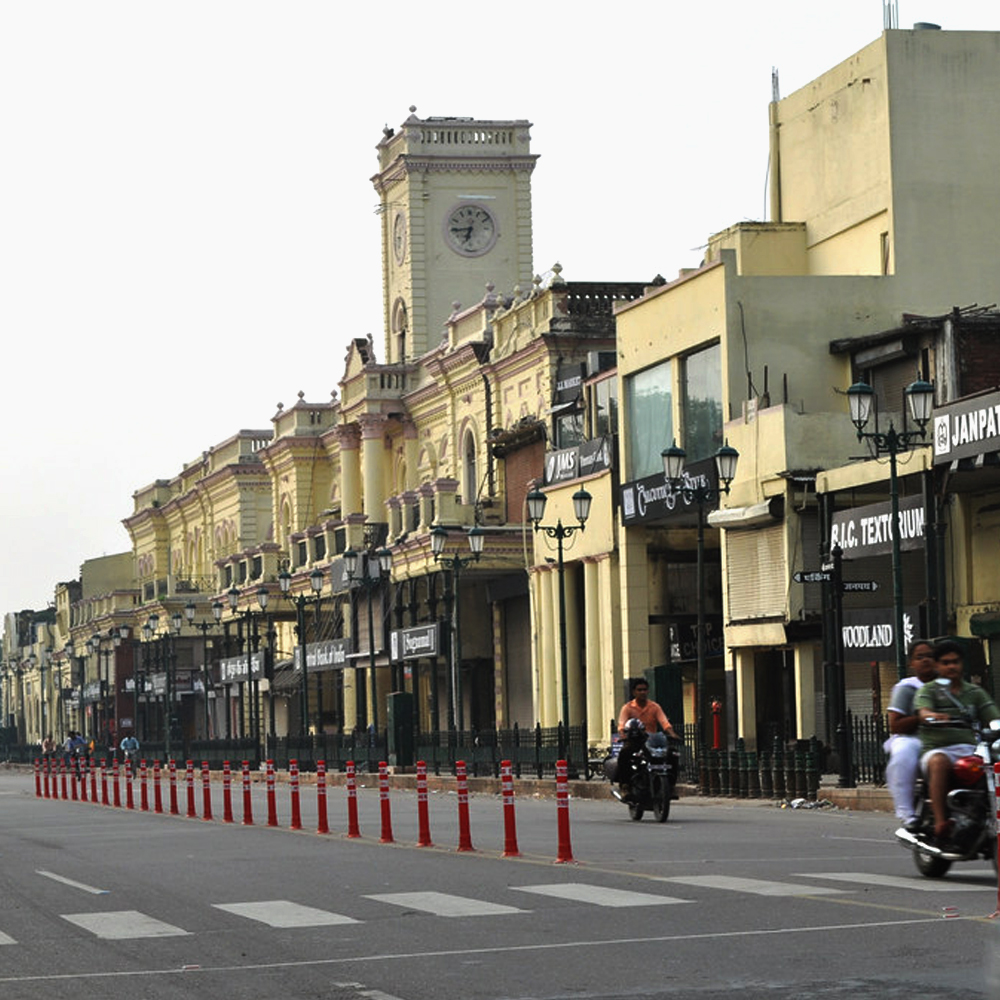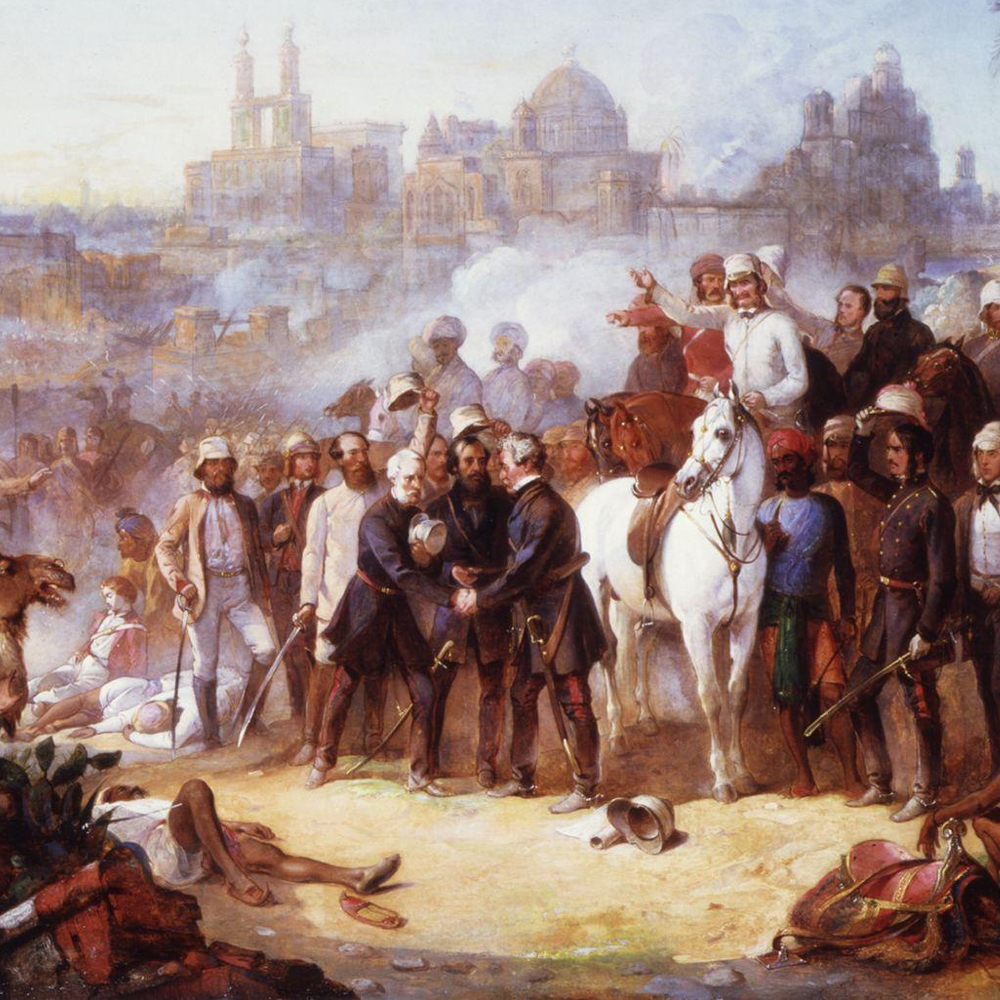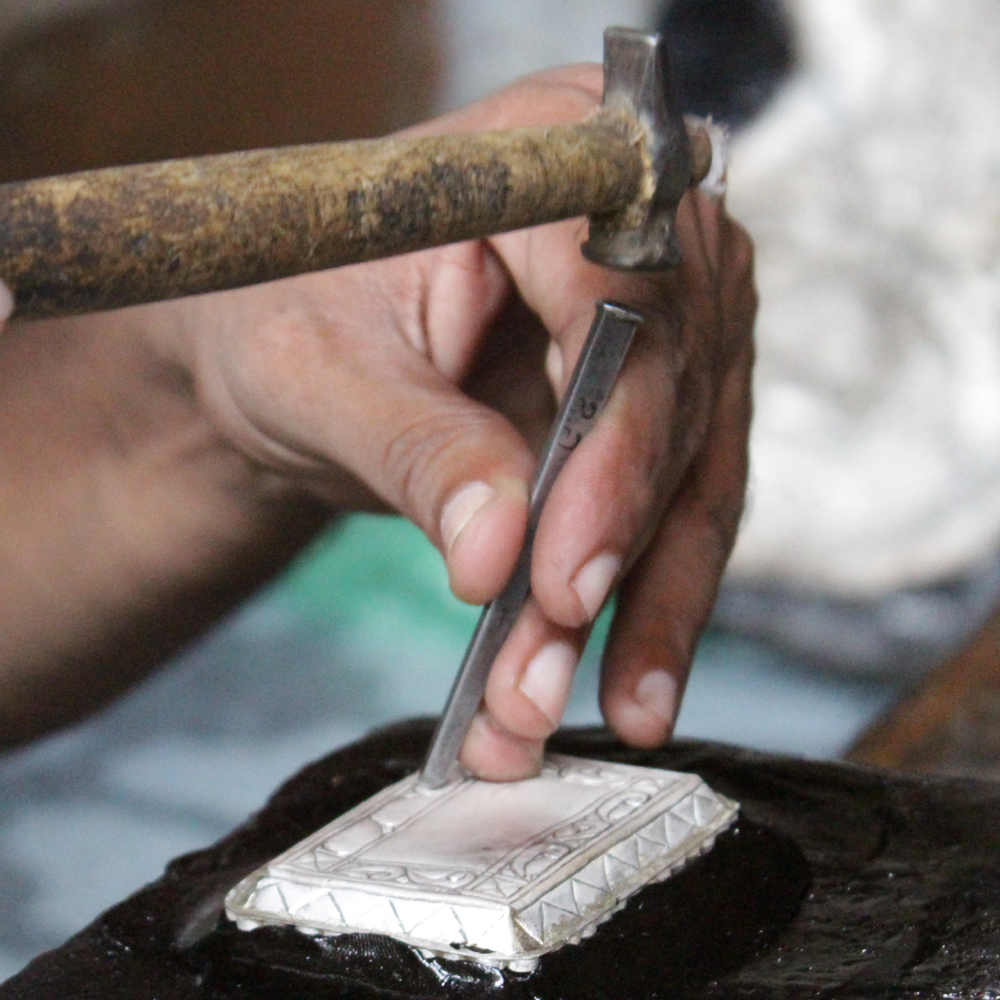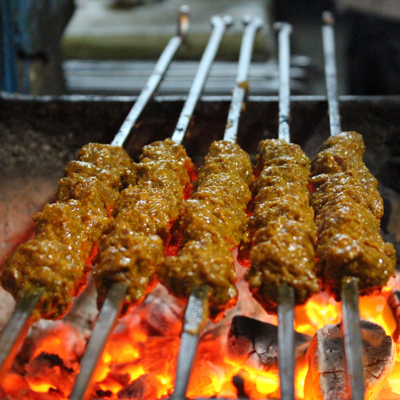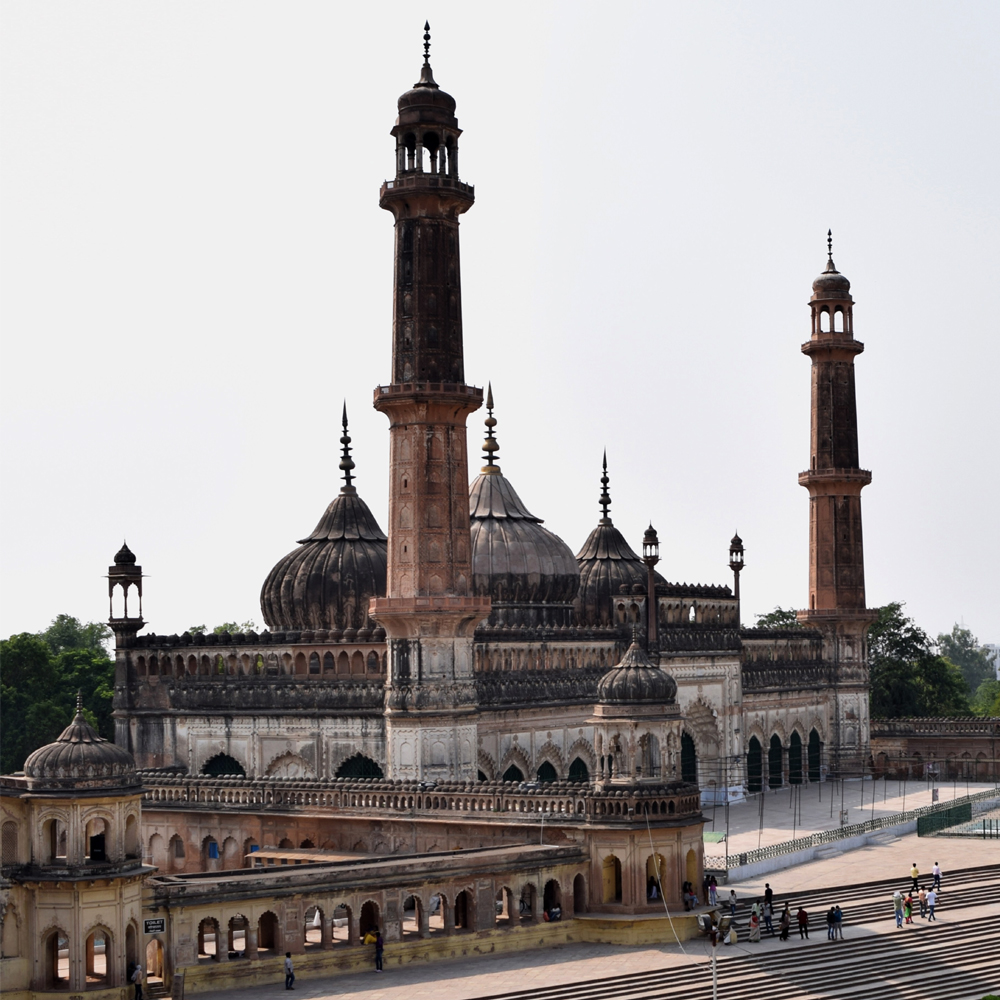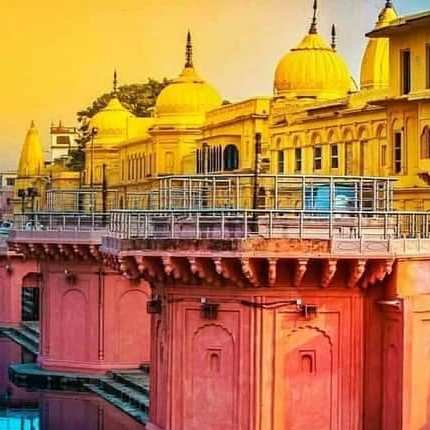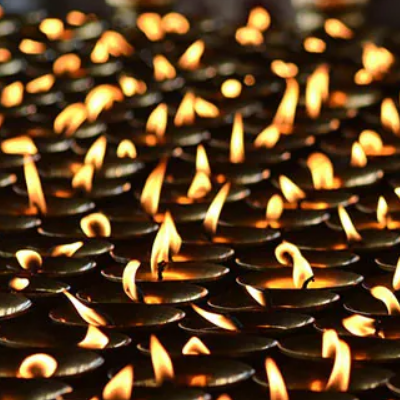Volume: 15, No: 03 ; March-2021
Sikanderbagh or Sikander Bagh was once a huge palace complex built by Wajid Ali Shah in the middle of Lucknow for his wife Begum Sikander Mahal. Of course now only a very small part remains and a few walls of it but nevertheless, it was one important address in the city and it still is now.

Wajid Ali Shah’s father Amjad Ali Shah was a disciplined man of a very high moral character and quite a spiritual personality too. This was in contrast to Wajid Ali Shah’s lifestyle.

L-R: Amjad Ali Shah, Wajid Ali Shah (in the center) & Sikander Hashmat Mirza
Prophet Mohammad’s grandson Hazrat Imam Hussain’s birth anniversary was being celebrated at a famous head of eunuch, Khwajasara Mohammad Hussain Ali Khan’s home. Here Amjad Ali Shah with his two sons, the crown prince, Wajid Ali Shah and Sikander Hashmat Mirza were invited. The celebration included a live traditional dance performance called. ‘Mujra’ by a very pretty young girl named, Umrao. Wajid Ali Shah on seeing her was floored and in his writings has described her beauty as under:-
“Palkein nashtar ka kam karti thein,
aankhein zahar halahal pilane ko taiyar thein,
uska kitaabi chehra mazmoon-e-ishq yaad dilate hein”
(Her eyelids were like an arrow, her eyes intoxicating and her face like a book reminds of chapters of love)

‘Mujra’ being performed by nautch girl for entertainment (unrelated indicative image)
To woo this young girl was high on Wajid Ali Shah’s mind but due to his father around he could not approach her directly, as he often would. Wajid Ali Shah’s friend, Mehdi somehow managed this for him and the girl was taken in the fold of Wajid Ali Shah secretly in a ‘Dola’ (a secret and a silent palanquin arrival – a kind of wedding) after this celebration ended. Umaro was now Wajid Ali Shah’s and was named Sikander. The mistress who owned the girl, Umda Khanam tried her best to get her back from the palace into her Kotha (dance entertainment studio, where nautch-girls perform) in Chowk of Lucknow, but just could not succeed, as Wajid Ali Shah was quite possessive of her and wouldn’t let her go. This in spite of the fact that Umda Khanam alleged that crown Prince Wajid Ali Shah had forcefully taken her away.
In this entire melee Sikander gained a lot. She was awarded a pension of 3000 on a monthly basis, which then was a princely sum for personal expenses and a fancy title of ‘Habib-us-Sultan Mukarramat-uz-Zamani Jenab Sikander Mahal Begum’. This elevated her status in the royal court and Wajid Ali Shah became so fond of her that he would only eat from her hands in his palace. In one of the fairs Wajid Ali Shah adorned a dress of a ‘jogi’ (hermit) and Sikander Mahal wore a dress of a ‘jogan’ (female hermit).
Wajid Ali Shah out of love for Sikander Mahal, built a huge palace incurring a cost of five hundred thousand, a huge sum in those days. Best of builder Gulam Raza Khan, Daynat-ud-Daula, Sabit Ali Khan and Kashi Ram were engaged for the construction. On the banks of river Gomti was this enclosed walled palace with stretching gardens and a road in the middle. Quite a few buildings were in the middle of the garden too which were green thorough out with many flowering plants and exotic fruits too. Many plants planted here were foreign in origin and that made the garden quite impressive as compared to others in the city.

The Palace with its expansive gardens took one year to be built. A large house was in the middle of the well-laid garden along with a mosque. Huge ornamental gates were erected with the road reaching the river Gomti. The entire complex was made of bricks and mortar. The bricks were ‘lakhuri’ the local variety of bricks quite peculiar to this region, only 19mm in thickness. Some larger bricks 5cm in thickness were also used here in the construction which were locally called ‘Pan Patta’. Many motifs and stucco work adorned the entire complex, these included floral patterns and of course the traditional fish patterns. Arches and columns all around made it look as a grand royal palace in the midst of the city with beautiful gardens and free flowing river – picturesque setting.
Sikander Mahal was not actually legally married to be Wajid Ali Shah’s consort but always wished to marry the King. On knowing her wish, Wajid Ali Shah accepted her and a wedding was performed between the two but thereafter she lived for a short time and died early.
After the demise of Sikander Mahal, her palace wore a deserted look and the peace was disturbed in 1857 during the uprising. Wajid Ali Shah was deposed and sent to Calcutta. The rebels were on an all out siege of Lucknow and spirits were high. After recapturing Alambagh, British forces moved to the city. On 16 November 1857, Sikander Bagh was the place of action. More than two thousand rebel forces were holding on to this palace and had vowed in the name of the holy water of Ganges and the Holy Quran, based on their religion, to uproot the British from Lucknow. But as British forces were much better equipped with guns and ammunition, they could take over this stronghold from the rebel forces killing almost all.

93rd Highlanders in Sikanderbagh on 16 November 1857 (National Army Museum, London)
The view of Sikanderbagh was the gloomiest, with dead bodies lying all over and blood puddles formed throughout the palace. Human stench and silence in the air filled this palace, which once was a symbol of love of Wajid Ali Shah for Sikander Mahal. It is believed that the resistance from the rebel forces was so intense that even Sir Colin Campbell paid homage to the killed rebels here for their heroic resistance in Sikanderbagh.
Battle of Sikander Bagh also brought forth the power of women soldiers in Lucknow. A woman positioned herself with a gun on a peepal tree (Peepal is also known as ‘sacred fig’, from the fig family belonging to India, found in abundance) and shot many from the British side. It was very late that her position was discovered and she was then shot dead, but not before she had taken many British lives aiming from the tree branch and firing on the head of the British soldiers, who passed by from the area.

Painting of Uda Devi (imaginary paining, as no photograph of her is available)
Very intelligently this woman named Uda Devi, laid a trap for British soldiers by placing a pitcher of drinking-water under the tree, and when soldiers approached this pitcher to quench their thirst, she aimed at them and fired with precision. Caption Dawson got suspicions on seeing the wounds of the soldiers killed, as all of them were on the top of their head, he could immediately understand that there was some firing from the top and he moved backward from this tree, calling out his confidante Wallace, on noticing a soldier perched on the tree, Wallace fired and the soldier fell dead on the ground. It was then that the soldier was stripped for searching the ammunition, only to be discovered that this was a lady but was dressed in tight pants and a coat, male soldiers’ uniform. Wallace, on discovering that he had actually shot a woman, repented and commented that he rather would have died thousand times, than to kill a woman.
Uda Devi was from a Pasi community, wife of one Makka Pasi, little is known about her, accept that there was a Pasi community in Lucknow and the site of a demolished Pasi Fort still exists in the outskirts of the city (of course now within the city). Uda was also known by her marital name of ‘Jagrani’, meaning queen of the world.
Wajid Ali Shah had recruited a huge army which included lower castes too and it is believed that Uda’s husband Makka Pasi had joined this regiment. Fighting the British he was killed in action and then to avenge the killing of her husband, Uda joined the battle in Sikander Bagh, waylaying more than 24 soldiers from the British side.

Bust of Uda Devi in Sikander Bagh, Lucknow
Some historians believe, she drew her inspiration from Begum Hazrat Mahal and raised an all women brigade to fight the British. This brigade comprised mainly the women from lower castes or the downtrodden but their bravery and valour was something to look up to, and the war of 1857 can never be talked about without the mention of women in Awadh which includes Uda Devi apart from Begum Hazrat Mahal.
After 1857 like most of Wajid Ali Shah’s complexes were un-mindfully demolished, so was Sikanderbagh, which had become a real sore in the eyes of British due to more than 2000 British casualties caused here. Later more was demolished to make way for other modern buildings and roads. Larger part of this complex came under the National Botanical Gardens and the Research Institute which still maintains a huge botanical research facility and gardens all around it. It is quite popular with the morning walkers and can safely be called an oasis in the crowded concrete capital of Lucknow. What remains today is a gate, a few walls and bit of sidewalk only to tell the story of love and then the gruesome deaths of 1857.

Uda Devi’s statue at Sikanderbagh crossing (this is 2016 picture of a minister offering tribute to her as a freedom fighter)
A statue of Uda Devi on the crossing just outside Sikanderbagh makes her immortal, though very few know about her heroic tale still even in the city. And almost no one knows about Sikander Mahal, the favourite love interest of the last King Wajid Ali Shah for whom Sikanderbagh was built.
LUCKNOWLEDGE is an initiative by Tornos. We do not intend to intrude your privacy and thus have an automated UNSUBSCRIBE system. At any point you may unsubscribe to our e-column or subscribe to it again through a link on our website. The above article is shared and in no way intends to violate any copy right or intellectual rights that always remains with the writer/publisher. This e-column is a platform to share an article/event/update with the netizens and educate them about Destination Lucknow.









